The Daily Northwestern
Wednesday, April 16, 2025
12 SPORTS/Lacrosse ‘Lacrosse Night in Chicago’ on Thursday


Wednesday, April 16, 2025
12 SPORTS/Lacrosse ‘Lacrosse Night in Chicago’ on Thursday

e newcomers pledge increased engagement
By JACK BAKER and ANAVI PRAKASH
When SESP Prof. Nichole Pinkard learned she had won a seat on the Evanston/Skokie School District 65 Board of Education, she said she felt tremendous gratitude for her supporters — and a sense of urgency.
“I instantly was like, ‘Okay, we go a get to work,’” Pinkard said.
Pinkard is one of four newcomers elected to the board, alongside former District 65 educator Patricia S. Anderson, Foodsmart Vice President of Clinical Operations Maria Opdycke and Garre -Evangelical eological Seminary Prof. Andrew Wymer.
In a crowded field of 12 candidates, Anderson led with about 16% of the vote, followed by Pinkard with almost 14%, Opdycke with almost 12% and Wymer with almost 11%, according to uno cial results from the Cook County Clerk’s office
Tuesday.
The newly elected board members will officially take o ce in May as District 65 prepares to implement Phase 3 of its Structural De cit Reduction Plan, which outlines a potential $10-15 million in spending cuts aimed at achieving long-term nancial stability.
On the campaign trail, each candidate pledged to improve community trust amid potential school closures.
Meanwhile, four candidates sought four seats on the Evanston Township High School District 202 board. John Martin, a senior manager at a tax so ware company, was elected to ll the open seat currently held by retiring board member Gretchen Livingston. Incumbents Pat Savage-Williams, Pat Maunsell and Mirah Anti kept their seats. Martin said because residents are “overall very happy” with Evanston Township High School, his goal is to listen to the community’s concerns and tap into his strengths.
“For things like the nancial perspective, which is what I do for a living all day every day, I’m
» See SCHOOL BOARD, page 11
VIDEO/ e Daily Explains
The Daily breaks down the $790 million federal funding freeze

By ISAIAH STEINBERG, NINETH KANIESKI KOSO, and LILY OGBURN daily senior staffers
@isaiahstei27/@ninethkk
@lilyogburn
Early Monday morning, Northwestern University Police responded to reported antisemitic vandalism — including “hateful” gra ti and yers — outside University Hall and Kresge Hall. e area south of University
By AVANTIKA SINGH
When Brea Lassek (Medill ’24) walked into her rst WNUR Sports meeting as a freshman, she saw only one other woman in the room. is disparity was sometimes re ected in their coverage, Lassek said. ough WNUR was Northwestern’s agship radio broadcast publication, its national women’s sports coverage had room for improvement, she said.
Searching for female role models, Lassek never imagined that over the next four years she would change the landscape of WNUR’s female sports coverage — she would become that role model.
Although a minority, Lassek found a small but mighty community
By the time Lassek graduated, she served as WNUR’s inaugural female sports director for two years before passing down the position to another woman, Medill senior Perri Kitei.
Alongside three other female WNUR members, Lassek also founded “Her Take,” the radio

station’s rst podcast dedicated to covering women’s sports, hosted exclusively by women. e podcast has since been passed down to new co-hosts twice.
“It just shows how many women are involved and how seriously it’s taken,” Lassek, who now works as a producer and host at Perfect Game, said.
During Lassek’s time at NU, she said women were an “obvious” minority in WNUR. Yet, the men in the club never made her feel anything less than an equal. Lassek said they also acknowledged the unique challenges women in the sports industry face, which helped ease the burden of those barriers. e growing lineage of female broadcasters in WNUR, as well as the inclusive community, has made the club a welcoming space for newcomers, said Medill freshman Brielle Lowry.
Lowry, the newest co-host of “Her Take,” has known she wanted to be a sports journalist since she was five-years-old. Before she arrived at NU, though, she said she worried about a lack of female representation in campus sports publications.
Lowry credits WNUR’s small but mighty female community for

Some women in sports journalism at Northwestern say they see improvements in female representation in the sports media industry.
making her feel at home at NU. She said she feels seen and heard, and she quickly became close to the club’s cohort of women.
However, Lowry said she does not always feel welcome at other sports media organizations on campus. She said she doesn’t think
those clubs are intentionally exclusionary, but that the men within them o en subconsciously create that sort of environment.
“It sucks when they don’t even know they’re being exclusionary,”
» See BROADCASTING , page 11
Hall, including e Rock, was cordoned o Monday morning as NU Facilities Management removed red spray paint from the steps of the building. University Police Chief of Police Bruce Lewis said in a news release that University Police began
responding to the incident around 4 a.m. “A group of individuals vandalized several buildings on our Evanston campus, spray-painting » See GRAFFITI, page 11
By HANNAH WEBSTER daily senior staffer @hannahe_webster
Mayor Daniel Biss will appoint Cat Vielma to the Land Use Commission, rather than reappointing George Halik, according to an email from Biss to city sta Friday shared with e Daily. e appointment has been met with criticism from some residents.
In his email to staff, Biss acknowledged he received an “unusual amount of public input” from residents as Halik’s term expired. At Monday’s City Council meeting, many community members spoke against the decision during public comment, and an online petition urging Biss to reappoint Halik has received 527 signatures as of Tuesday a ernoon.
“(Halik) has been a voice for residents and is someone
who is quali ed, deeply experienced and was ve months into what we believe is the most consequential planning process in Evanston in decades,” said Jenny Washburn, who wrote the petition. “We equated it to removing a juror mid-trial. Why would someone do that unless they wanted to cause disruption and x the outcome?”
Halik was an original member of the commission in 2022. He said he rst applied for reappointment in February, knowing his term was set to expire in March. In a statement to e Daily, Vielma said she applied for both the Land Use Commission and Housing & Community Development Commi ee early this year.
e decision not to reappoint Halik comes as the commission reviews Envision Evanston 2045, the city’s highly-debated comprehensive plan and zoning overhaul spearheaded by Biss. Halik pushed back on blanket upzoning, yet he maintains that he is not against Envision Evanston. Vielma, on the other hand,
» See LUC COMMISSIONER, page 11
By ANAVI PRAKASH daily senior staffer @anavi_52
Around 140 community members shared their priorities for school closures and consolidations at three community meetings held by Evanston/Skokie School District 65 between April 10 and April 15. District 65 administrators led the meetings, which will inform Phase 3 of the district’s Structural De cit Reduction Plan. e nal phase in the SDRP may include school closures and is a push to make the district nancially sustainable a er a $13.2 million de cit in scal year 2025.
Between Phases 1 and 2 of the SDRP, the district cut about $20 million in expenses, Chief Financial O cer Tamara Mitchell said. e goal for Phase 3 is to reduce district spending by another $10 million to 15 million. All Phase 3 decisions will be implemented in scal year 2027, Mitchell added.
Potential school closures are also top of mind because the district has about $188 million in outstanding maintenance repairs, said Stacy Beardsley, the district’s assistant superintendent of performance management and accountability.
e district will see declining enrollment over the next few years, according to a 2024 demography report. Each school closed will save the district about $2 million per year, she said.
“ is is about care for the district now and going forward,” Beardsley said.
On average, Beardsley said, the 18 buildings in the district are 79 years old. e average school building in the United States is 49 years old, according to the National Center for Education Statistics. Beardsley added that the average building occupancy rate across the district is 65%, with schools ranging from 7% over capacity to 47% under capacity.
A er learning about the state of the district, meeting a endees split into groups to write lists of criteria they want the district to use when considering school closures. Some groups expressed doubt that school closures were enough to help the district save money.
“$2 million in savings per school doesn’t seem like enough to close a school,” one poster read.
Sixth Ward resident Rachel Waldinger said if a building needs a signi cantly larger number of repairs compared to others, it might not be worth keeping due
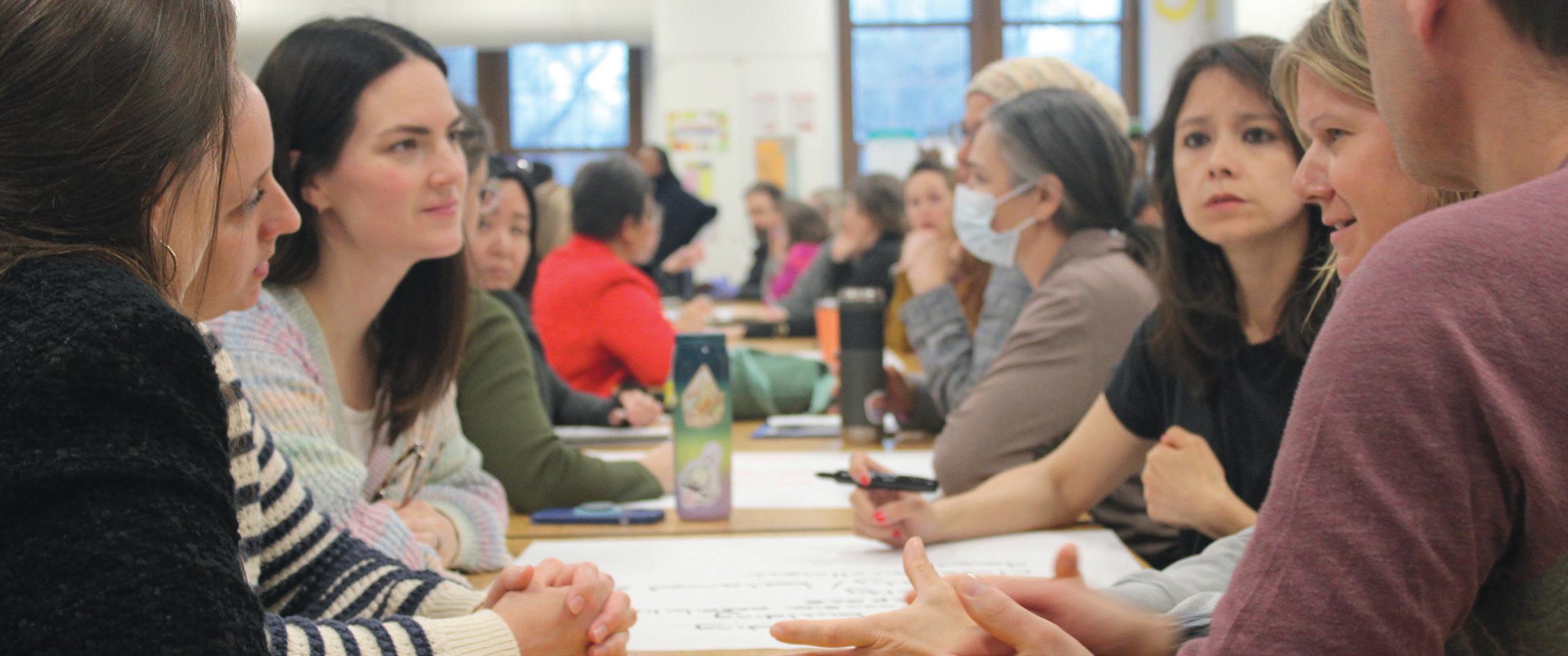
to the extra costs it creates.
e mother of three District 65 students emphasized that regardless of other criteria, excellence in schools is the most important thing.
“I would rather walk a li le bit farther with my kids to school if I knew that the school was an excellent school, had class sizes that provided a good learning environment (and) had a supportive principal and teachers,” Waldinger said.
Walkability and building maintenance costs were the criteria most commonly re ected on groups’ posters. School enrollment and transportation costs were also top priorities for community members.
Other priorities included keeping district programs like Two-Way Immersion and African-Centered Curriculum available, considering how the school buildings can be used by the larger Evanston community and compliance with Americans with Disabilities Act requirements. Currently, the district has four buildings that are less than 50% compliant with ADA guidelines, Beardsley said.
Some groups wrote about maintaining a neighborhood school system and ensuring at-risk student
populations have the resources they need.
A er writing their criteria, groups categorized each criteria based on four categories: excellence, equity, e ective use of facilities and e ective use of nances. e district came up with the criteria based on what districts in similar situations have done in the past, Beardsley said.
Waldinger said the categories didn’t completely t her group’s vision for closure criteria.
“Our group felt that excellence should be an umbrella over everything and shouldn’t necessarily be the criterion closing schools,” she said.
Second Ward resident Kimberly Holmes-Ross said she values student enrollment in relation to schools’ capacities and building conditions when it comes to looking at school closures.
She added that creating a welcoming community is important, no ma er the district’s school con guration.
“I would like all the students to be happy and healthy, where people felt safe and comfortable and there is a cultural competency amongst the schools,” said Holmes-Ross, who a ended District 65 schools.
Beardsley emphasized that no decisions had been

made yet and one possible scenario is that no schools are closed — meaning that the expense cuts come from other areas.
Participants had time at the end of the meeting to share ideas beyond school closures that could help the district.
Across all three meetings, there were suggestions to consolidate Evanston’s two school districts, move pre-K into the elementary schools and increase fundraising e orts. Some community members also suggested partnering with Northwestern for transportation and other programming in the district.
Holmes-Ross, the executive director of Evanston Cradle to Career, an organization that helps families connect with community resources, said engaging the community in meetings like these is important to ensure the district understands the community’s vision for its schools.
“We all want our schools to succeed, and we know if the schools don’t succeed, we don’t succeed,” HolmesRoss said.
a.prakash@dailynorthwestern.com

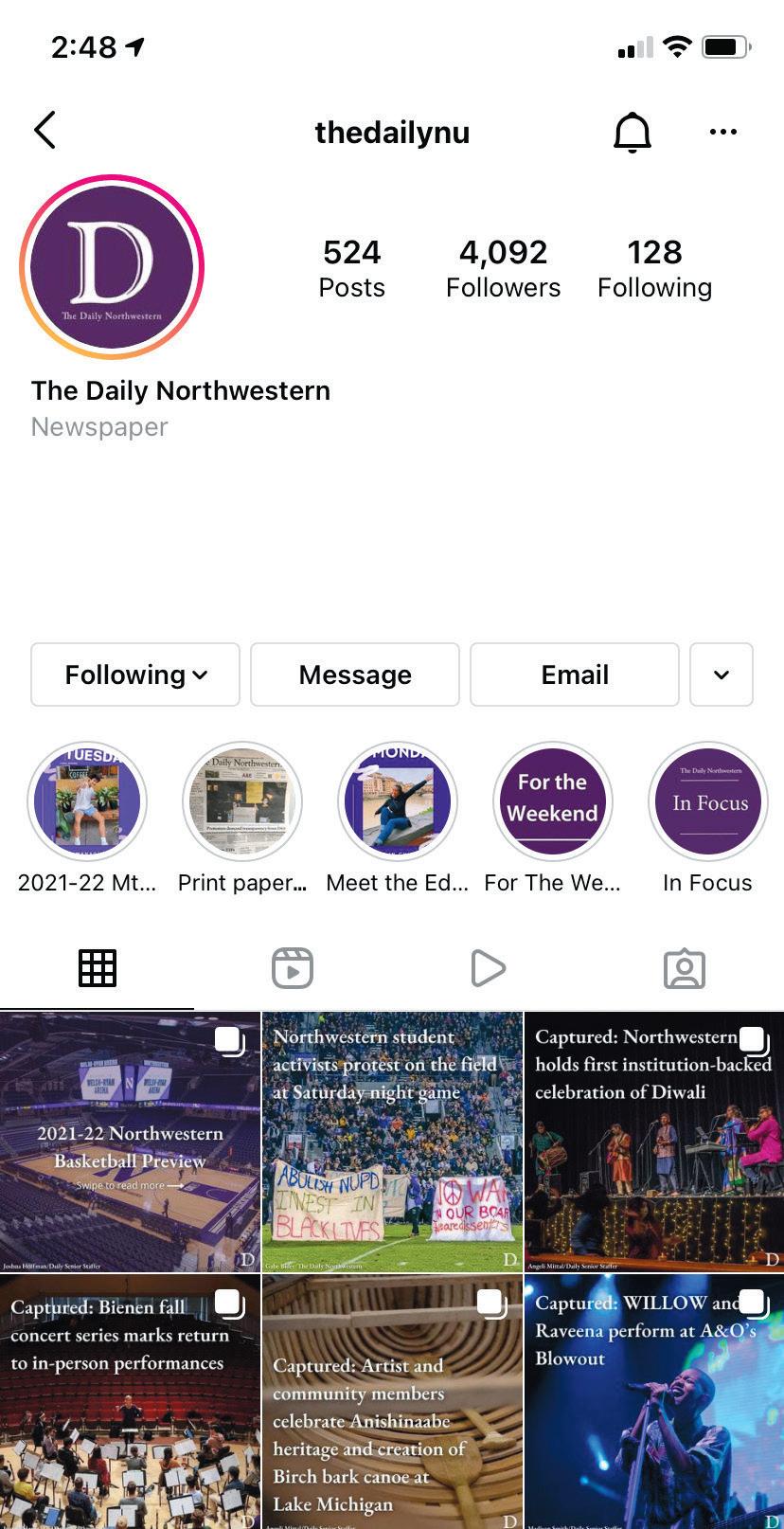

By NINETH KANIESKI KOSO daily senior staffer @ninethkk
As Northwestern faculty grapple with the implications of a federal funding freeze, they are already living with the effects of a 10% nonpersonnel spending reduction enacted by the University in February.
For NU, the spending reduction was seen as a drastic but necessary move to brace for potential federal funding cuts in the near future. That was until the Trump administration froze $790 million in federal funding for NU on April 8, citing federal antisemitism investigations into the University.
“If the current U.S. administration stays in power for the full four years, it could start to have pretty devastating impacts on graduate (and) undergraduate education,” art history Prof. Christina Kiaer said.
Kiaer said the spending reductions, which were for the full 2025 fiscal year, were effectively 20% budget cuts because they were enacted halfway through the fiscal year.
To comply with the spending reduction, Kiaer, the chair of the art history department, said the department had to cancel a large event planned for spring and catering services for other events.
Many art history Ph.D. students, especially international students, are reconsidering summer research travel because they are nervous about traveling outside of the country, she said.
Kiaer also said the department had to cancel a Warnock Lecture in art history for Spring Quarter when the speaker, who was supposed to visit from Paris, elected not to come because she did not want to visit the U.S. in its current political climate.
“She didn’t want to have to try to come through customs control, and then suddenly we saved all the money on the catering at the dinner,” Kiaer said. “Ten percent is a small enough amount that I think we’re going to get through.”
Beyond the budget cuts, Kiaer said many departments had to admit smaller cohorts of Ph.D. students. In the future, she said these Ph.D. students will become teaching assistants. When there are fewer teaching assistants, Kiaer
said faculty might need to pick up some of the grading work, which takes time away from their research.
“Northwestern is an R1 research university, so if we have our teaching loads doubled, then that cuts down significantly on the research we can do, and then that cuts down on the prestige of our departments and our scholars,” Kiaer said.
Due to the tightened budget, Kiaer said the department hasn’t been able to support all its students and faculty for resources like classroom trips. Instead, she said the department has had to pick and choose what to fund.
“It’s just harder to do what we would normally do to really enhance undergraduate courses and research for graduate students and undergrads and faculty,” Kiaer said.
Since the spending reduction was required in the middle of the year, molecular biosciences Prof. Heather Pinkett said her department struggled to make an educated decision about where to spend money.
Similarly to Kiaer, Pinkett acknowledged the challenges posed by the timing of the spending reduction in the fiscal year. Purchases made prior to the reduction will be unaffected, she said, but the reduction prevents the department from doing anything later in the quarter.
Pinkett said her department cut its future programming, including limiting seminars led by guest speakers.
“In addition to just the seminar alone, there is dissemination of really important information — oftentimes it’s preliminary data that’s not yet published — that we’re seeing firsthand,” Pinkett said. “We’re having one-on-one conversations that really move research forward and move innovation forward.”
Following the spending reduction, McCormick Prof. Erica Hartmann said the civil and environmental engineering department tried to minimize the impact of the reduction on students.
Hartmann said the department cut a seminar series where experts from around the country come to NU and talk about their research. These seminars were inspirational for students and helped them build networks and collaboration, she said.

“(We) bring in professors from other universities whose research they might find inspiring and with whom they may want to pursue graduate research,” Hartmann said. “This is a lost opportunity to create those kinds of connections, where they can actually meet one-on-one with those faculty members.”
Beyond the seminars, Hartmann said the department normally funds student organizations like Solar Decathlon, a competition in which students design sustainable buildings. However, the Department of Energy canceled the competition this year, saving the department travel expenses.
Potential federal funding cuts could have “real” ramifications for individual researchers, Hartmann said, but also the public, who she said will be deprived of critical knowledge and innovation.
“These cuts are not to the University per se. They are to individual research labs,” Hartmann said. “They have big implications for the University as a whole, obviously, but they also have life-changing implications to the individuals who are working on these projects.”.
n.kanieskikoso@dailynorthwestern.com
The Daily Northwestern www.dailynorthwestern.com
Editor in Chief Lily Ogburn eic@dailynorthwestern.com
General Manager Stacia Campbell stacia@dailynorthwestern.com
Holly and John Madigan Newsroom
Phone | 847.491.3222
Campus desk campus@dailynorthwestern.com
City desk city@dailynorthwestern.com
Sports desk sports@dailynorthwestern.com
Ad Office | 847.491.7206 spc-compshop@northwestern.edu
The Daily Northwestern is printed each Wednesday during the academic year, except vacation periods, the two weeks preceding them and once during August, by Students Publishing Co., Inc. of Northwestern University, 1999 Campus Drive, Evanston, IL 60208. All news is published 24/7 online at Dailynorthwestern.com.
First copy of The Daily is free, additional copies are 50 cents. All material published herein, except advertising or where indicated otherwise, is Copyright 2025 The Daily Northwestern and protected under the “work made for hire” and “periodical publication” clauses of copyright law.
POSTMASTER: Send address changes to The Daily Northwestern, 1999 Campus Drive, Evanston, IL 60208. Subscriptions are $100 for the academic year. The Daily Northwestern is not responsible for more than one incorrect ad insertion.
Check out DAILYNORTHWESTERN.COM for breaking news




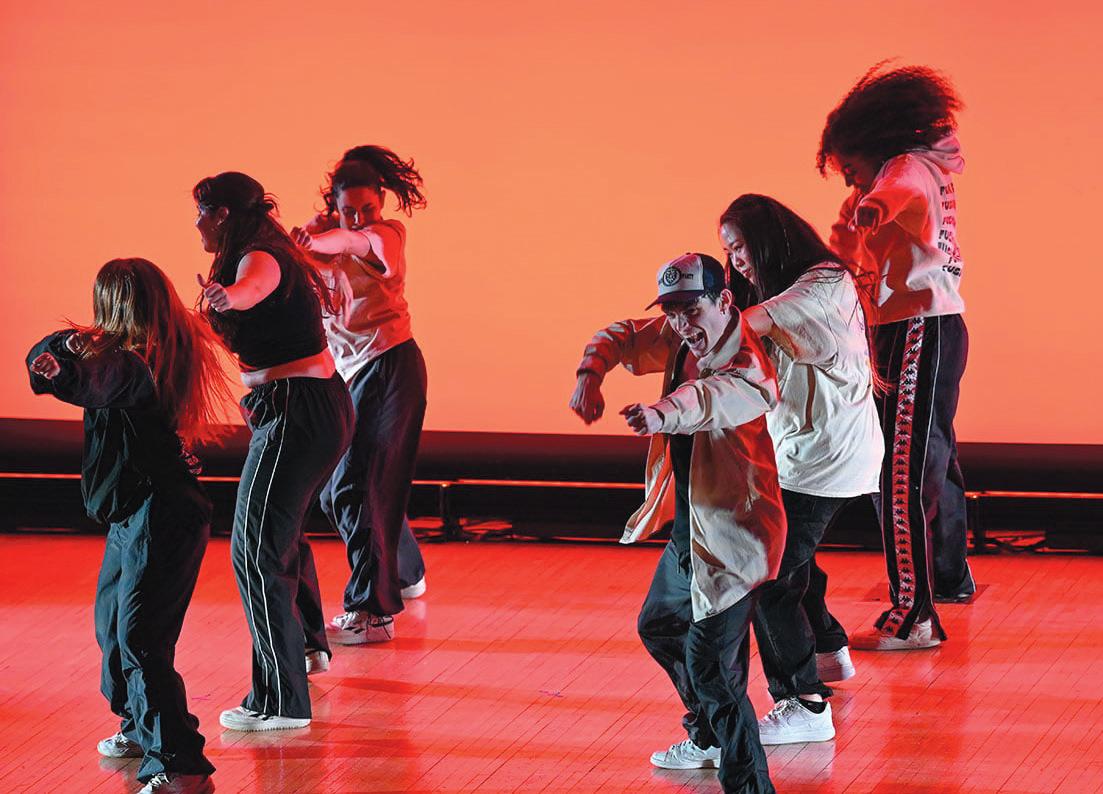
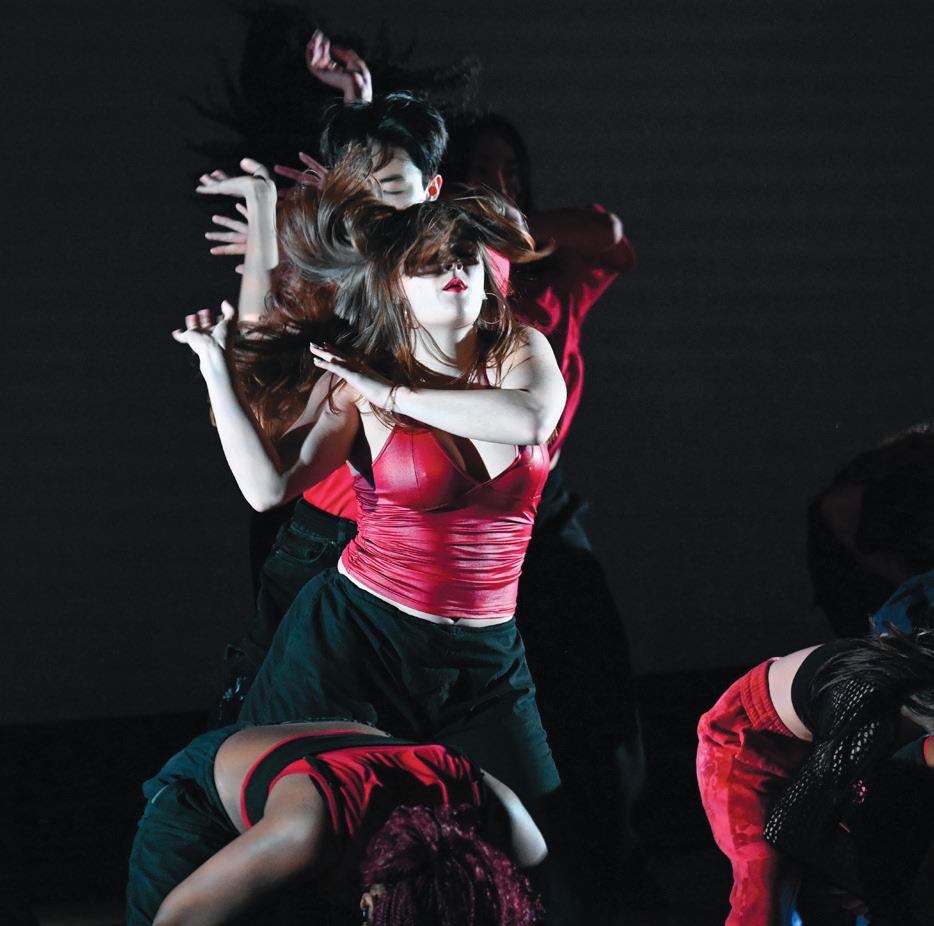

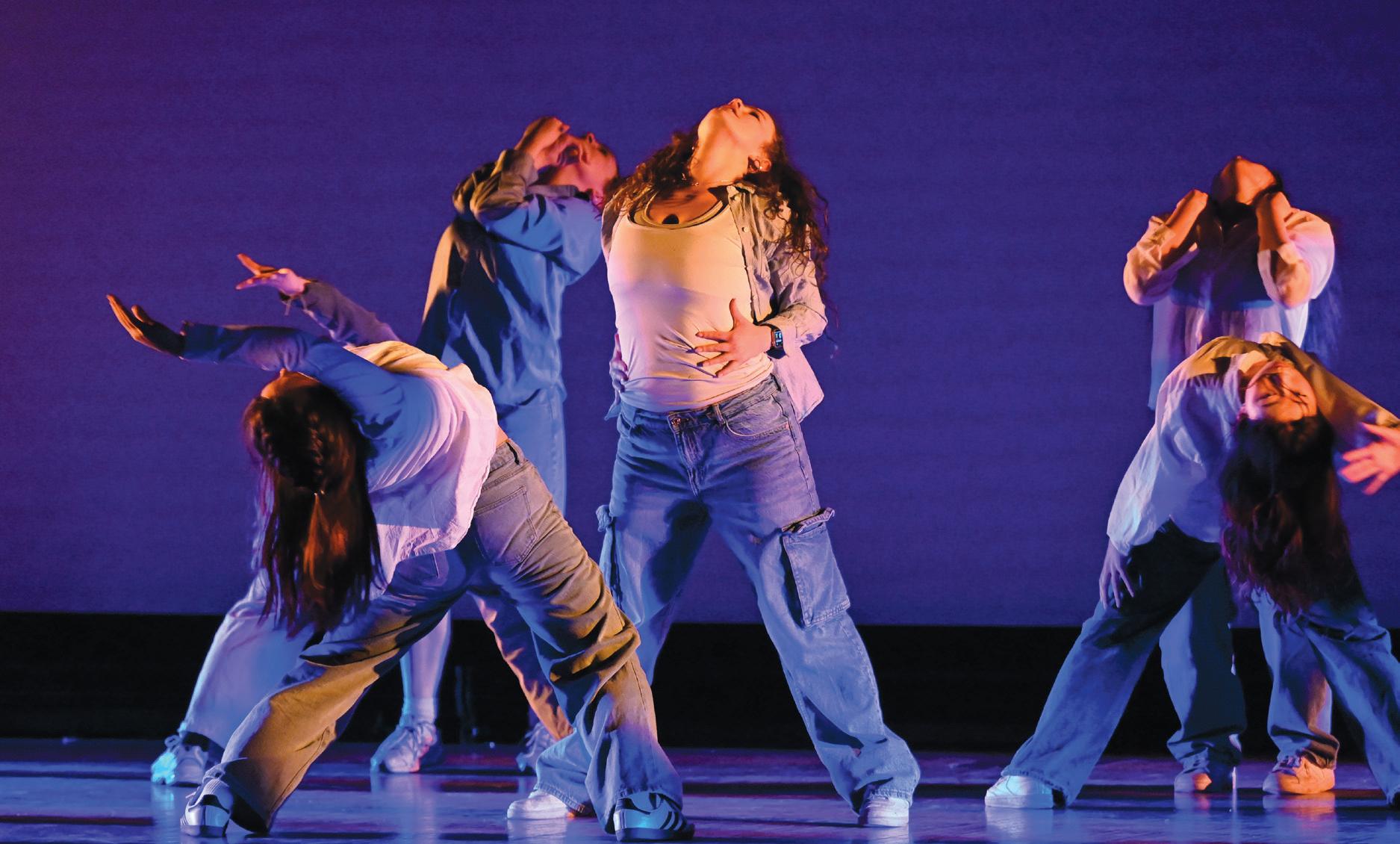
By EUNICE EUNSOO LEE the daily northwestern
Fusion Dance Company celebrated its 21st anniversary with its annual spring show, “Finally 21,” this weekend in Ryan Family Auditorium.
The theme of the show celebrated the dance group’s 21st birthday, featuring 23 hip hop and contemporary pieces relating to partying and coming of age.
“We chose songs that we think would be best suited to have a good time,” Medill senior and Fusion member Raquel Rossi said. “Some of them in a little bit more of a sultry way.
Some of them in a little bit more of a high energy way.”
The show started off with almost 50 cast members dancing to Rihanna’s “Birthday Cake,” reinforcing the birthday theme and showcasing Fusion’s energy.
Weinberg sophomore and Fusion Public Relations Chair Maya Hemmi said the piece she choreographed to “Virgo’s Groove” by Beyoncé was inspired by people finding love in the club.
“It’s a celebration of all things that come with the coming of age,” Hemmi said. “There’s a lot of things that come with turning 21, but I sort of focus more on the fun side of young love.”
Other highly applauded dances included
“Sticky” by Tyler, The Creator and “squabble up” by Kendrick Lamar.
Each show featured different guest performers, including Northwestern K-Dance, Afrothunda Dance Troupe, Graffiti Dancers, THUNK a cappella and Northwestern Bhangra.
Both Hemmi and Rossi said Fusion is like “family,” and that they get a lot of support from members both within and outside of dance.
“It’s so cool to see everyone coming from different places, both geographically and just background-wise, and then meeting all these people and being able to dance with them,”
Rossi said.
Medill junior Sarah Kim said she came to
the show to support her friend, Weinberg junior Emily Park. She said she was not only impressed by the dancing, but also by the overall production, as the videos in between sets captured Fusion’s inside jokes while still making sure the audience could understand them.
The videos parodied popular video series such as Vogue’s 73 Questions and WIRED’s Autocomplete Interviews.
“I love coming to these shows because I think it’s so impressive that these people are so smart yet also so talented at dancing,” Kim said. “I don’t know how they do both, especially at this school because it’s so hard.”
eunsoolee2027@u.northwestern.edu
By MARLEY SMITH
Evanston record store Animal Records usually opens at noon every day. But on Saturday, it opened at 8 a.m. for Record Store Day.
For some customers, RSD began outside the store at 6:30 p.m. the night before. A few people camped outside the store in hopes of being the first one in and getting their hands on an exclusive release vinyl. By 8 a.m., there was a line of about 75 people outside the store, said Greg Allen, owner of Animal Records, located on Grove Street.
Allen said on an average day, his store gets a few dozen customers. On RSD, he said he anticipated around 500 customers.
RSD is the global holiday for vinyl lovers held biannually on the third Saturday of April and Black Friday. Artists and labels release exclusive vinyls sold only in independent record stores on RSD with the purpose of helping business, Allen said.
Walking into Animal Records on RSD, customers were greeted by music, dogs from the Evanston Animal Shelter and special deals and giveaways. While the store had exclusive release vinyls, they also gave away goodie bags and posters, as well as other swag with certain purchases.
Live music performances began at 2 p.m., featuring local artists Nikki O’Neill and Joe Di Zillo.
“I encourage everyone when they come in, I say, ‘Hey, if you see a record you’re interested in, let me know, and I’ll put it on a stereo,’’’ Allen said. “We want people to feel at home.”
Some customers on the hunt faced
disappointment.
New Trier Township High School senior Quinn Larsen said she arrived at Animal Records at 7:30 p.m. the night before. She camped out hoping to get the exclusive RSD “Wicked” release, a green and pink glitter vinyl with special cover art and a bonus track. The one person who entered the store before Larsen snagged the only copy.
For RSD, Vintage Vinyl, located on Davis Street, opened their “vault” of hand-picked past RSD exclusives, which Larsen said included two of the “Wicked” releases. They also sold out before Larsen could buy one, she said.
Unlike Larsen, Animal Records customer Eric Mayer said it is best to go record shopping with no goals or expectations and come across whatever might be in store.
Mayer said he listens to vinyls, rather than
online music platforms like Spotify, as a way to “slow down” life.
“I think that our world is moving faster and faster and dedicating time to a specific record. … You might not like every song,” Mayer said. “It’s kind of a pacing exercise.”
Animal Records customers on RSD ranged from older adults to children shopping with their parents.
Allen said that while RSD is great for business, he views his store as a gathering place for the community.
“Obviously we’re here to make a profit, but we’re more than just about making a profit,” Allen said. “They (the customers) don’t have to spend money, they can just come in and hang out.”
By REGAN HUIZENGA
the daily northwestern @reganmichele215
While bored one day, Communication senior Rachel Weintraub went down a rabbit hole reading the “missed connections” section of Craigslist — a site where users post descriptions of people they briefly meet and want to reencounter — and was inspired to turn it into a musical.
She created “Missed Connections,” an hourlong student-written folk musical that held three preview shows on Friday and Saturday — transforming a basement classroom in 555 Clark St. into Southside Bar, a rural Appalachian bar set in 1997. The bar faces foreclosure, and the musical follows a handful of people as they come to terms with the bar’s closure and its effect on their relationships with each other.
The basement classroom transformed into an operating bar 30 minutes prior to each show,
allowing the audience to order snacks and drinks, interact with characters and walk around the space. This choice allowed the actors to develop their characters and warm up before the shows, Taub said.
Weintraub said she plans to continue adapting the show between now and August, when the show will be performed for a week on Edinburgh Festival Fringe, an annual, three-week long showcase of performing arts. The Los Angeles Theatre Initiative will bring “Missed Connections” to the festival Aug. 18 to Aug. 23.
Communication junior and Director Millie Rose Taub attended the festival while studying abroad in Scotland last year. She said that Festival Fringe takes over the entire city, with shows being performed in massive theaters, tiny theaters, classrooms and even basements of bars.
Taub said that she was particularly excited to work on “Missed Connections” because of its setting in rural Appalachia because it is not often used in musicals.
“Through a couple of posters up on the wall and
the energy that the cast brings into the space, it completely transforms into this bar in the middle of Appalachia,” Taub said. “That’s really always so exciting to see.”
Weintraub wrote all of the characters based on people in her own life, she said. Some were inspired by multiple people and interactions, while others were more directly connected to friends and family.
Tom, an awkward, nerdy character who struggles through a situation with a girl he meets in the bar, was based on one of Weintraub’s friends, she said. Her friend once told her, in excruciating detail, a story about him and a girl in a bar, and it inspired Weintraub to include it in “Missed Connections,” she said.
Weintraub also worked with Eric Powers (Communication ’24) to write the musical. When she initially had the idea for the show, she proposed it to Powers, who she had previously worked with on the “The Waa-Mu Show.”
Because Powers was abroad in France, Weintraub said the writing process was different
this time. Typically, the duo worked best by bouncing ideas off of each other and improvising together, but this was much more difficult to do online, Weintraub said.
Bienen freshman Paddy May played an old man named Earl, inspired in part by Weintraub’s grandfather. May said he enjoyed the challenge of working on a show that was still in development. When rehearsals started for the show, it was still being written and edited, and one of the songs was added just three weeks before the show’s previews, he said.
As Weintraub continues to tweak the show and add details from her own life, she said she hopes people will leave thinking about their own relationships and taking away a “sense of home.”
“This is truly a slice of life musical,” Weintraub said. “These are regular people doing regular things having regular big feelings.”
r.huizenga@dailynorthwestern.com
By DALTON HANNA the daily northwestern @daltonhanna06
The most anticipated music festival of the year kicked off last weekend in Coachella Valley, California, delivering three days of unforgettable performances and unexpected surprises. While this year I was not able to personally attend Coachella, I’ve become a bit obsessed with the plethora of pop culture moments that have emerged with the festival’s occurrence each year.
This year’s lineup featured headliners Lady Gaga, Green Day, Post Malone and Travis Scott.
One performer who didn’t miss on music or fashion is Lady Gaga. She kicked the weekend off with a strong start on Friday. Highlights included a special performance of her Oscar-winning song “Shallow,” a recreation of her Alexander McQueen dress from the 2009 MTV Video Music Awards and other homages to the many iconic moments in Gaga’s legendary career.
Gaga embodied the perfect headliner, effortlessly blending theatrical flair with raw talent. She commanded the stage with a mix of her greatest hits and fresh material, reminding the crowd why she’s a pop icon.
In classic Coachella style, Day 2 delivered drama. Charli XCX, who’s finishing off the run of her influential “Brat” era was a performer — not a headliner — on the Mainstage Saturday night. Her show was a spectacle. She turned Coachella into “club Charli,” bringing out guest after guest, including performances from Billie Eilish, Troye
Comedian, actor Devon Walker announced as A&O spring speaker
Sivan and Lorde. XCX’s performance solidified the legendary grip she’s held on pop culture over the last year.
However, XCX struck up controversy when photographed at her star-studded after party wearing a sash reading “Miss Should Be Headliner.” This statement was viewed as direct shade toward the headliners of the night, Green Day and Travis Scott. After the image surfaced online, discourse grew over XCX’s spot in the lineup.
Her performance was proof that she was more than ready for that headline spotlight, and she certainly has the popularity to back her star power. XCX’s career is having a moment right now, and everyone knows it. Headlining Coachella would’ve been a great way to close this era.
Day 3, while last, was certainly not least. I jumped when I saw on X that TikTok dancerturned-popstar Addison Rae appeared as a surprise guest during Arca’s set, performing her hit “Aquamarine.” She also cheekily revealed, through text that said “June 6th” on her underwear, that an album is on the way.
I’ve enjoyed this marketing strategy that’s grown in popularity over the last few years at Coachella. There is no better time for artists to drop big news. Last year, Sabrina Carpenter’s “Espresso” release was timed perfectly with her Coachella set; the song went on to snag a nomination for a Record of the Year Grammy.
Of course, one can’t talk about Coachella without addressing the ever-controversial outfit choices. In my opinion, fashion discourse has gone too far for a festival that’s focus should be on music. It’s always a disappointment to see people more
A&O Productions announced Monday that comedian and actor Devon Walker will be visiting NU as its spring speaker. In an Instagram post, A&O said Walker will make an appearance in Lutkin Hall on April 16 at 7 p.m. Walker is best known for his role on “Saturday

worried about photo-ops and fit checks instead of enjoying the music.
That being said, I’m sick of cheetah print, big belts and bloomer shorts and wish outfits would channel original 2000s Coachella – think boho style, flowy silhouettes and flower crowns that expressed a more carefree vibe.
No one can ever say for sure which trends, artists or songs will escape the desert to dominate the post-festival conversation. If I had to guess, I’d echo the words Charli XCX shouted during her set — it’s going to be a “Lorde summer 2025”. Coachella’s second weekend kicks off on April 18 with the same lineup from weekend one.
Night Live.” He joined the sketch comedy show in 2022 as a featured player and was then promoted to the show’s repertory cast in 2024. Walker’s career began with stand-up comedy and took off through Comedy Central. He has written for shows like “Big Mouth” and “Everything’s Trash.”

d.hanna@dailynorthwestern.com
Leading up to the news, A&O posted multiple clues on its Instagram, including polls asking students who their favorite comedians or what their favorite SNL skits are. The club hinted at the standup comedian guest through posts with puns saying that the event will be “no joke” and that members would be keeping their “big mouths shut.”
A&O hosts a member of the entertainment industry every quarter to speak. Earlier this school year, the organization had food writer and chef Claire Saffitz and writer and comedian Ilana Glazer as guests. Tickets will be available for students on the A&O Instagram page starting Monday at 12 p.m.
— Maya Wong

On April 3, The Daily Northwestern published an op-ed written by Kevin Waldman titled, “Why the NU faculty quietly celebrating the end of DEI should not have to hide.” Waldman criticized what he described as the “loudest voices in academia,” who are supposedly in “full-blown panic mode” over the Trump Administration’s encroaching policies in higher education, including threats to dismantle DEI and the loss of federal funding.
If the events of this past week indicate anything, it’s that their “panic-mode” is wholly justified. The federal government is currently waging war on NU and other leading universities, attacking our federal funding and, in doing so, stymying graduate research. This week, the government froze $790 million in funding for NU and issued over 100 stop-work orders. The Daily also reported on the federal government revoking visas from a “limited number” of international students.
If there was any time to panic, it would be now.
Today, Harvard University’s president announced that the Ivy League school would not comply with Trump’s demands, calling the administration’s ultimatums unlawful. NU should follow suit.
On Jan. 20, President Trump attempted to ban DEI programs at the federal level through an executive order, calling the practice “radical and wasteful” in its title. The Department of Education Office for Civil Rights quickly adopted the president’s strict order, calling on universities to halt considering race in hiring, scholarships or among “all other aspects of student, academic and campus life.”
Celebrating this ultimatum means capitulating to the demands of the Trump Administration. If we give into their policies, we sacrifice our shared values as an institution. Diversity and inclusion have long been central to those values, despite cowardly efforts to wipe away our DEI programming from online databases.
We should not be “celebrating the end of DEI,” which Waldman encourages professors to feel comfortable doing. We should be gravely concerned about the federal
government’s overreach into our University’s culture.
The Office of Institutional Diversity and Inclusion has been operating at NU since 2015. As NU’s acceptance rate has shrunk to 7%, the undergraduate admissions office has been able to successfully recruit a growing number of Black, Latine, Indigenous and International students, despite nationwide efforts to crack down on affirmative action and DEI. Without DEI programming, our efforts to recruit a diverse student body might suffer.
Waldman suggests that funding DEI comes at the expense of research at schools like the University of Michigan. He cites the fact that Michigan employs over 100 DEI-related personnel, which outnumbers its history department. Without any supporting evidence, he condemns these employees, suggesting they don’t “conduct research” or “advance scholarship” but rather enforce “ideological compliance.”
After reading his op-ed, I did some research of my own, uncovering that the University of Michigan has spent $250 million on DEI-related initiatives since 2016, according to the Chronicle of Higher Education. The number is a seemingly hefty expenditure;
however, this investment only amounts to roughly 1% of the university’s general-fund budget on an annual basis.
Waldman does offer sparse evidence, calling upon three professors in academia who harbored critical views on DEI and faced retaliation from their respective universities. This retaliation was definitely objectionable; however, removing DEI completely has far worse implications. In a time when elected officials are attacking our most vulnerable citizens, gutting protections for immigrants and threatening to cancel visas for international student protestors, leading universities need to champion equity and inclusion now more than ever. Elite institutions like NU, who boast endowments in the multi-billions, have a responsibility to give back to underrepresented communities.
Gabe Hawkins is a Medill freshman. He can be contacted at GabeHawkins2028@u.northwestern.edu. If you would like to respond publicly to this op-ed, send a Letter to the Editor to opinion@dailynorthwestern.com. The views expressed in this piece do not necessarily reflect the views of all staff members of The Daily Northwestern.

An estimated 4 million Americans suffer from a cluster of symptoms that describe fibromyalgia: widespread chronic pain, fatigue and poor sleep. For some people, the disease takes a devastating toll, leaving them unable to work and dependent on others.
In 2004, Lyrica (pregabalin) capsules became the first drug approved by the Food and Drug Administration to treat the disease, reducing pain by up to 30% and improving sleep quality. Since then, millions of Americans have taken the drug and enjoyed improved quality of life.
The treatment’s essential compound was developed in a lab right here at Northwestern by Professor Richard Silverman and visiting scholar Ryszard Andruszkiewicz. A grant from the National Institutes of Health facilitated this discovery.
Now, two significant factors in the discovery of pregabalin — robust public funding and the ability of foreign scholars to do research at American universities — are
under threat. Just yesterday, The New York Times reported that the Trump administration has frozen $790 million in funds to Northwestern, sending potentially revolutionary research to a screeching halt. These cuts come as both the Justice and Education Departments investigate antisemitic harassment on campus. Protecting Jewish students is not just a lazy pretext for these cuts, but a dangerous one. I am not going to belabor this important point, as I’ve seen a number of great pieces on the subject from Jewish peers around the country, but I’d like to point out an obvious fallacy in the Trump administration’s excuse: the ideological motivation for punishing universities was clearly laid out in The Heritage Foundation’s Project 2025, which was published in April 2023 — before Oct. 7 and the subsequent protests. (Although Trump has distanced himself from the policy proposal, several of its key authors serve in high positions in the administration.)
In the foreword of Project 2025’s policy proposal, The Heritage Foundation President Kevin Roberts outlined the organization’s goal to “to unite the conservative movement and the American people against elite rule and woke culture warriors,” which included
plans to strip away the privileges of selective universities. To Roberts and his allies, elite universities — populated by “‘woke ‘diversicrats’” — look down upon the rest of the United States and need to be put in their proper place.
It is here where the administration’s true motivations are revealed: a desire to punish wealthy liberals. I can see how those who align with Project 2025 might spin Northwestern to spur resentment among Americans at large: It’s a school where some students pay a tuition higher than the average U.S. yearly salary to take classes like “Beyond Porn” and “Lana Del Rey: Emotional Landscapes of U.S. Settler Colonialism.” (I do not agree with this perception, and I think the wealthy authors are deeply hypocritical, but this is how Northwestern is framed in such conversations.)
Nevertheless, whether you agree with the merits of Northwestern’s existence or not, it is undeniable that its benefits reach beyond Evanston to help Americans of all political ideologies.
And, in the same vein, when the Trump administration cuts funding from Northwestern, the consequences extend beyond its students and professors. While it is not exactly clear yet which areas of research will
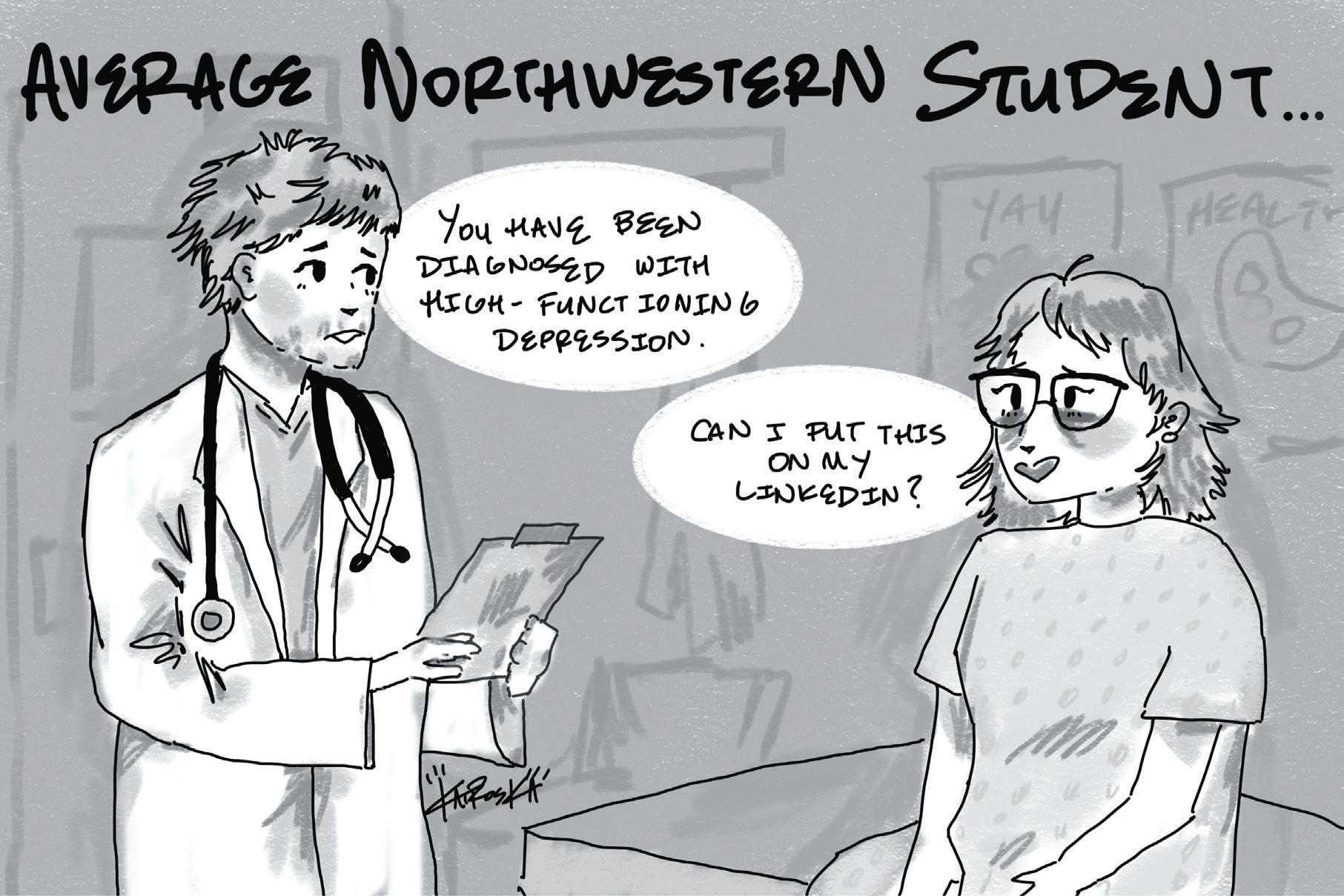
suffer the most, these consequences could extend to the patients with Alzheimer’s and their caregivers who could have received lifesaving treatment, or people who could have used an implant for diabetes and obesity treatment, both of which are occurring right now in Northwestern labs with the help of public funds.
There are some impacts of a presidential administration that are easy to measure, good or bad, like how many jobs are created or lost, or how much the GDP has increased or fallen. But some effects are immeasurable, including lost potential.
It’s a great tragedy that we cannot gauge how much we could’ve had, but now won’t — of how many lives would’ve been improved, or saved, by the research done at Northwestern and other universities where funding is now frozen. All I can tell you is that we’ve lost a great deal.
Talia Winiarsky is a Weinberg junior. She can be contacted at TaliaWiniarsky2026@u.northwestern.edu. If you would like to respond publicly to this op-ed, send a Letter to the Editor to opinion@dailynorthwestern.com. The views expressed in this piece do not necessarily reflect the views of all staff members of The Daily Northwestern.
The Daily Northwestern Volume 149, Issue 2
Editor in Chief
Lily Ogburn
Opinion Editor
Eli Kronenberg
Assistant Opinion
Editor
Gabe Hawkins
Managing Editors
Misha Manjuran Oberoi
Danny O’Grady
Anavi Prakash
David Samson
Leah Schroeder
Shreya Srinivasan
Jerry Wu
LETTERS TO THE EDITOR may be sent to 1999 Campus Drive, Evanston, IL 60208, via fax at 847-491-9905, via e-mail to opinion@ dailynorthwestern.com or by dropping a letter in the box outside The Daily office.
Letters have the following requirements:
• Should be typed and double-spaced
• Should include the author’s name, signature, school, class and phone number.
• Should be fewer than 300 words They will be checked for authenticity and may be edited for length, clarity, style and grammar.
Letters, columns and cartoons contain the opinion of the authors, not Students Publishing Co. Inc. Submissions signed by more than three people must include at least one and no more than three names designated to represent the group.
Editorials reflect the majority opinion of The Daily’s student editorial board and not the opinions of either Northwestern University or Students Publishing Co. Inc.
By MARISA GUERRA ECHEVERRIA daily senior staffer @marisa_g_ech
When Parielle Davis first stepped into the 7th Ward race, community activist and real estate broker Mary Rosinski said she heard some community members were worried about weakness behind Davis’ soft spoken, quiet demeanor.
Rosinski’s response to these doubts was the opposite: stark confidence in Davis’ ability to represent her ward. Rosinski had previously placed a bid for the seat, but backed out of the race and endorsed Davis.
“Don’t underestimate people who speak quietly, because she’s like a willow tree,” Rosinski said. “She bends, she listens. She’s soft-spoken, but she’s strong and she’s resilient, and that’s what we need.”
Davis’ quiet voice became a rallying cry among 7th Ward residents sympathetic to her past advocacy, including her leadership in the Most Livable City Association, which opposes the commercial rezoning of Ryan Field.
Davis now appears to have won her bid in the 7th Ward race with about 58% of votes, according to unofficial results from the Cook County Clerk’s office Sunday. While Davis has claimed victory, her opponent Kerry Mundy, a former naval officer and retail equities trader, has yet to release an official statement.
Davis ran to fill the seat vacated by Ald. Eleanor Revelle (7th), who announced her retirement from the role last fall.
As she looks to take her spot on the dais, Davis brings a history of local political organization and grassroots support, to which she attributes her victory on April 1.
Davis, a 31-year-old mother of two young children, software engineer and attorney, first moved to Evanston from Chicago in 2020 to seek quality education for her children. Since then, she has founded Black Residents of Evanston, acted as vice president of MLCA and chaired the Better than Biss committee in opposition to Mayor Daniel Biss’ tie-breaking vote in favor of Ryan Field’s commercial rezoning.
In her upcoming term, she said she wishes to foster dialogue with 7th Ward residents
by hosting community meetings to discuss the ward’s most pressing concerns, including preparations for Ryan Field’s commercialization, school consolidations and small business revitalization.
“Change is always scary for people and always brings a lot of uncertainty,” Davis said. “And so the best way to introduce change is with notice and slowly give people the ability to warm up to any new idea.”
Davis’ resident-oriented priorities had been a part of her political platform since her days in MLCA, through which she fought for a comprehensive community benefits agreement for Evanston residents in the stadium rebuild and rezoning.
MLCA co-founder and President David DeCarlo supports Davis’ analytical approach to politics, saying that it will cut through City Council’s “pie in the sky” controversies. MLCA endorsed Davis in the race.
7th Ward resident Sonia Cohen, who voted for Davis, said Davis’ involvement in the Ryan Field negotiations and her understanding of its impacts has driven up her grassroots support.
“There’s a level of distrust and division in Evanston, particularly in the 7th Ward,” Cohen said. “(We have) a lot of questions of who will stand for residents versus more corporate interests and university interests, and so a lot of people got very active in her campaign, because she is one of us.”
Some residents were also particularly drawn to Davis’ professional background, including her technological and data skills as a Google software engineer. According to her campaign website, Davis advocates for a more data-driven approach to help resolve the city’s most critical issues, which she said include city-wide rezoning and greater housing affordability under Envision Evanston 2045.
Her outlook brings comfort to Rosinski, who said it will guide and help assess the city’s current policy goals.
“I think that she will ask for the data before making decisions,” Rosinski said. “I think she’ll ask questions that need to be asked, because that’s how good governments are brought.”
Cohen also said she hoped Davis’ understanding of the law would promote a greater standard of transparency and rule-following in


the city, including a stricter adherence to city ordinances and the Illinois Open Meetings Act.
Davis’ campaign mobilized Northwestern students for Evanston politics, including through campaign and academic events on campus. The Davis campaign’s chief of staff, Weinberg senior Sanjana Rajesh, a former Daily staffer, emphasized Davis’ interpersonal connections with voters during events on the NU campus, where she offered personal advice to students seeking careers in tech and law.
“She wanted to help them personally, it wasn’t just invested in them as, like, ‘Oh, you’re going to vote for me,’” Rajesh said.
DeCarlo also lauded Davis’ ability to engage with residents in local issues by clearly summarizing local issues and giving community members the opportunity to act.
Davis said she wants voters to feel heard and well-represented through her new directives on City Council and is open to any conversation.
“We have a lot of really brilliant people in our community, and so I can say this honestly, I don’t think anyone’s come to me with an idea (where) I was just like, ‘that’s a dumb idea.’” Davis said. “Even if we disagree, I can see how it is a solution.”
marisaguerraecheverria2027@u.northwestern.edu

By SASHA DRAEGER-MAZER daily senior staffer @sashadm27
Last week, Northwestern’s chapter of the American Association of University Professors circulated a petition for the Faculty Assembly to consider 10 resolutions on academic freedom.
e resolutions grew out of “a frustration with the failure of Northwestern’s leadership and also the Faculty Senate, frankly, to protect … academic freedom at Northwestern,” political science Prof. Jacqueline Stevens, president of NU-AAUP said. Stevens said the resolutions are in response to the University’s handling of the Trump administration — which recently froze $790 million in federal funding for NU, citing Title VI investigations of antisemitism on campus.
Communication Prof. Linda Gates, memberat-large for NU-AAUP, cited threats to freedom of speech and open debate as motivating factors for the resolutions. She called these concepts “the cornerstone of the university.”
“ e situation is so dire for everything — for the University, for the country — that my colleagues and I feel we have to do something,” she said.
e petition received the required 75 faculty signatures by the Monday deadline to add the resolutions to the Faculty Assembly meeting agenda next week.
What is the Faculty Assembly?
NU-AAUP turned to the Faculty Assembly a er failing to advance its resolutions via the University administration and Faculty Senate.
“We decided to take advantage of a governance procedure at Northwestern that anticipates this kind of situation and allows the faculty to directly pass their own resolutions,” Stevens said.
e Assembly is a distinct entity from the Faculty Senate. e Senate meets monthly and handles day-to-day legislative ma ers, whereas the Assembly meets twice each year and serves as a forum for all faculty members to vote. Its authority supersedes the Senate when it has a quorum — 10% of the faculty body — present, said Jorge Coronado, NU-AAUP’s treasurer.
e proposed resolutions are scheduled to be discussed at the April 21 meeting. While
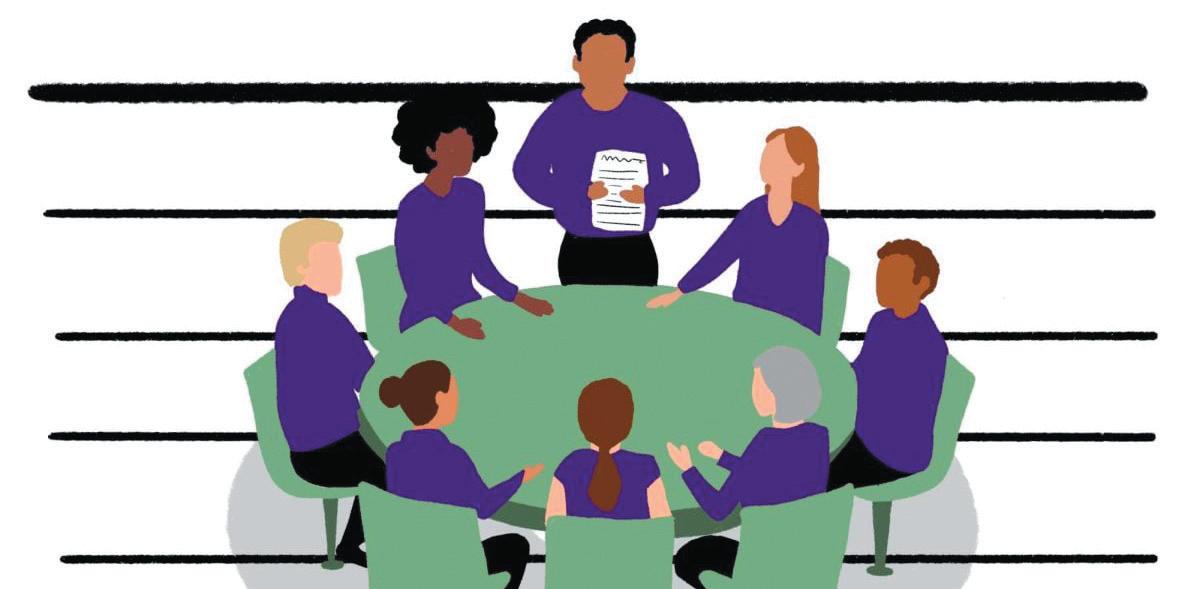
resolutions passed by the Assembly are non-binding, part of the goal, Coronado said, is to make faculty members aware of their own voice.
“We’re trying to make it so people are more aware that these avenues do exist, and weak though they are, they can be made stronger,” he said.
Highlights of NU-AAUP’s resolutions
Resolutions one through three call on the University to protect First Amendment rights to free speech, while the fourth resolution demands the University not require students or faculty to complete the anti-bias training unveiled in February.
e h resolution calls for faculty members under investigation to be able to record and release their interactions with investigators. In light of the intended termination of Medill Prof. Steven rasher, this resolution has garnered a ention recently.
Stevens, who is also the founding director of NU’s Deportation Research Clinic, drew speci c a ention to resolutions six and seven, which directly respond to the recent deportations of students at peer institutions. ese resolutions demand that NU not release names or records to the government without a court order and withdraw from its “discretionary participation” in E-Verify, a program used to verify a person’s employment eligibility.
Resolution eight would limit the University’s ability to view digital materials stored on NU devices such as email accounts. e ninth resolution calls on the University to draw on its endowment.
e 10th resolution calls for the addition of eight “faculty visitors” to the Board of Trustees. ese visitors, selected by the Assembly, would have “the right to a end all board meetings and review Board records.” e creation of the faculty visitor positions and greater Board oversight is a
long-standing NU-AAUP goal, according to chapter leaders.
“ at would mean a position where we’re able to monitor and speak out about … the Board of Trustees,” Coronado said.
Coronado also criticized the Board’s guidance to University administration on how to handle federal pressure.
He said the University’s current approach of “anticipatory obedience,” may be a slippery slope, pointing to what has happened at Columbia University. Despite Columbia’s accession to many Trump administration demands, the government is still seeking a consent decree that would put Columbia under judicial oversight.
“As a university, Northwestern can choose to agree with the federal government and see itself remade in the image of Trump,” Coronado said. “Or, it can choose to resist it.”
s.draeger-mazer@dailynorthwestern.com


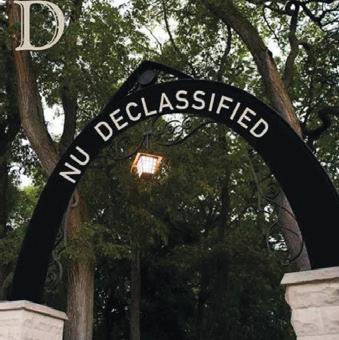

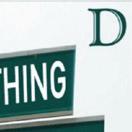























By DESIREE LUO the daily northwestern
Last December, 4th Ward resident Claire Hillesland was searching for a second-hand winter coat for her two-year-old daughter.
She asked 9th Ward resident Katie Mckiernan, whom she’d met two months prior through a toddlers’ program at the Chandler-Newberger Community Center, where to find such a coat. Hillesland and Mckiernan said they realized there was nowhere in Evanston to buy second-hand children’s clothing. That changed when they founded Little Gems, which opened Saturday on Washington Street. For its grand opening, more than 100 customers filled the store — far more than Hillesland said she’d expected. While parents shopped and conversed, children lined up on the sidewalk for face painting and gelato.
Mayor Daniel Biss arrived around noon for a ribbon-cutting ceremony, but between talking to families and managing logistics, Hillesland said they forgot about the ribbon. They used leftover bright pink bulletin board trim instead.
“It felt really surreal,” Hillesland said. “I can’t believe all these people are here to take pictures and watch us cut a makeshift ribbon.”
The store also sells toys and books, many of which come from Mckiernan’s personal antique collection. She said she’s always loved thrifting and started a vintage furniture company with her husband in 2012.
Like Mckiernan, Chicago resident Jackie Krejnik said she often buys clothing second-hand — just like her mother did for her.
“Finding something that’s already been loved by another family just feels kind of special,” Krejnik said. “You’re getting a gift from somebody that you maybe don’t know.”
Krejnik said she heard about Little Gems’ opening through Hillesland, whom she met while working at Asrai Garden in Wicker Park. She held floral arrangement workshops at the hotel where Hillesland managed programming. Hillesland said she hopes to arrange a pop-up with Krejnik at the store around Christmas.
Biss said he might return to buy items for his nieces and nephews.
“I feel disappointed that I’m out of the age where I have kids who’d be perfect to shop for here,” Biss said.
Skokie resident Christina Magnabosco said she valued Little Gems’ affordability. She said half of her children’s clothes go unworn, and she often needs to buy new items for them.
She said she and Mckiernan both have children who attended Pope John XXIII School, and that as a mom, it’s important to support other moms.
The founders said motherhood affects their approach to business. Mckiernan, who has three children, said in the future, she might have to close the shop for 20 minutes some days to pick up her kids from school.
Mckiernan also said among the customers she spoke with Saturday, one’s daughter was surprised Mckiernan had opened a store — or that she even could.
“She said, ‘Wait, we can just do that?’” Mckiernan said. “Maybe girls don’t have that big dream because they don’t see a lot of women business owners, so it’s the main goal to support women-owned businesses. You can do this. Look at all the women that are doing it.”
For months, Hillesland said the concept of a second-hand children’s store in Evanston seemed like a “hypothetical.” While she and Mckiernan both
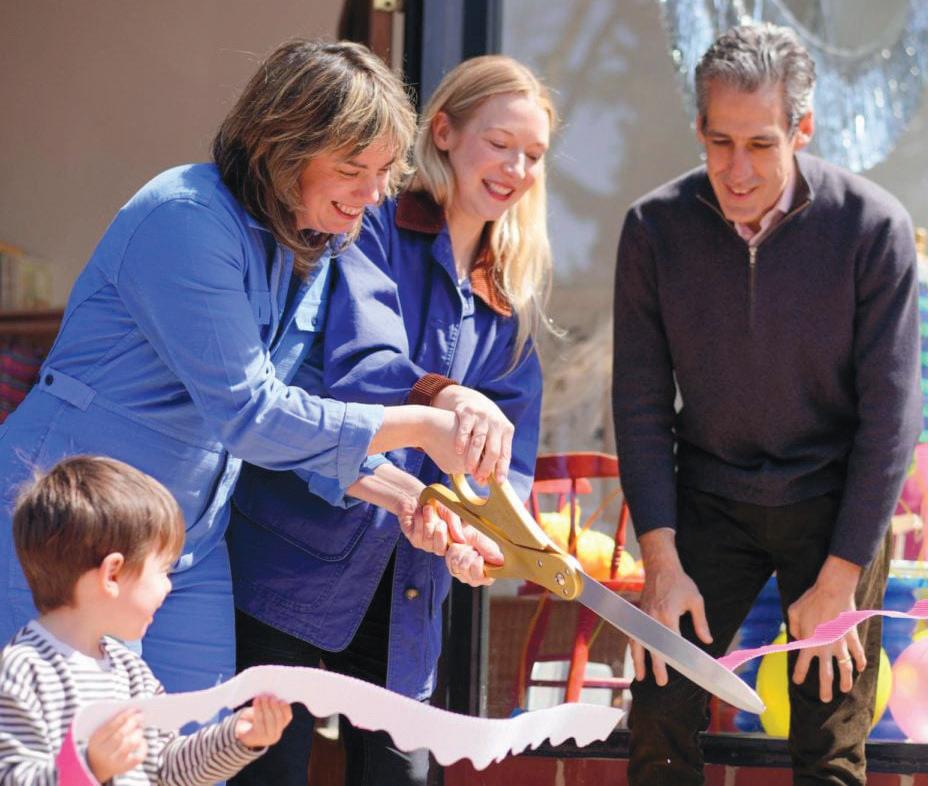
thought one would garner interest, they were never completely sure.
“Today, it feels like we were proven right,” Hillesland said.
desireeluo2028@u.northwestern.edu
By CARLOTTA ANGIOLILLO daily senior staffer
@carlottaang76
For legal studies Prof. Shana Bernstein, part of being Jewish is a shared belief across religious, ethnic and political divides in the importance of debate, inquiry and disagreement.
However, the Trump administration’s recent actions undermine these values, she said.
As the federal government escalates its attempts to combat antisemitism on college campuses — including freezing $790 million in funding for Northwestern last week — several Jewish NU professors said the Trump administration is using antisemitism to justify broader punishments against universities.
A group of faculty, staff and students from more than two dozen Boston-area colleges and universities published a letter March 11 titled “Not In Our Name.” The
letter denounces the Trump administration’s attacks on universities while also calling on university leaders to “embrace the diversity of Jewish voices” and “resist any other effort to politicize Jewish identity.”
The letter now has more than 3,300 signatures from across the country — 25 of whom are NU students, faculty and staff.
As NU faces an impending visit from the Federal Task Force to Combat Antisemitism, McCormick Prof. Michael Peshkin, who signed the letter, said he thinks the federal government is not sincere in its attempts to combat antisemitism.
“They are looking for compliance,” Peshkin said. “They do not care about antisemitism, so I do not welcome their presence here at all.”
Bernstein, who also signed the letter, said its language gives Jewish people — no matter their beliefs on Israel and Palestine — the opportunity to decry what she described as the “cynical use of purported antisemitism to violate the rights and due process”
of other people.
Drawing from her academic background on 20th-century United States history, Bernstein said the Trump administration’s actions are part of a “long tradition” in American history where people in power weaponize differences to divide groups based on ethnicity, religion, politics and other means.
Religious studies Prof. Barry Wimpfheimer said the federal government’s actions put Jews in a “terrible bind.” While there were “troubling” aspects of many universities’ responses to Hamas’ Oct. 7, 2023, attack, he said, the “erosion of civil liberties” will not benefit Jewish people.
He also said that by connecting the funding freeze to antisemitism, Trump has protected himself from potential repercussions.
“Whenever the blowback happens, and blowback will happen invariably, (Trump) can shift responsibility for it to the Jews, putting the Jews in their typical scapegoat role, which is really scary,” Wimpfheimer
said.
Wimpfheimer said he thinks universities have a collective action problem and wishes they would stand up together for freedom of speech and research.
However, he also said he understands why administrators are struggling with the current situation, and thinks “a combination of empathy and humility” is missing from conversations surrounding university responses to the Trump administration’s actions.
Bernstein said if the Trump administration was serious about helping universities fight antisemitism, it would support educational efforts to teach about antisemitism instead of cutting funding.
“I’d like to see a little more actual thinking about what antisemitism is, because it’s real,” Bernstein said. “It’s real all across the political spectrum, I think, but these cynical attempts to fix it are going to do the opposite.”
c.angiolillo@dailynorthwestern.com

















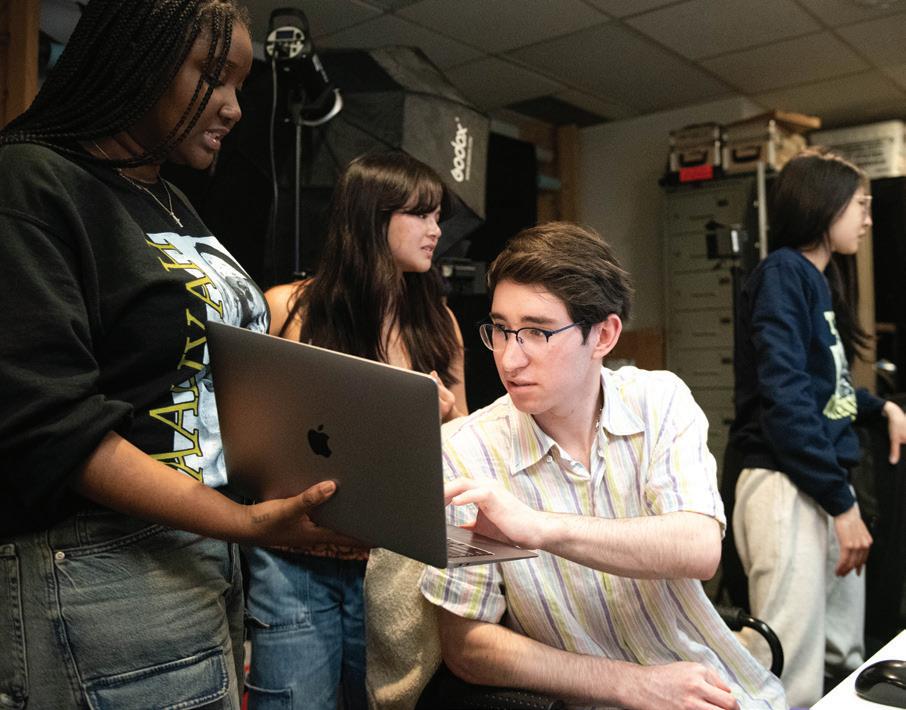











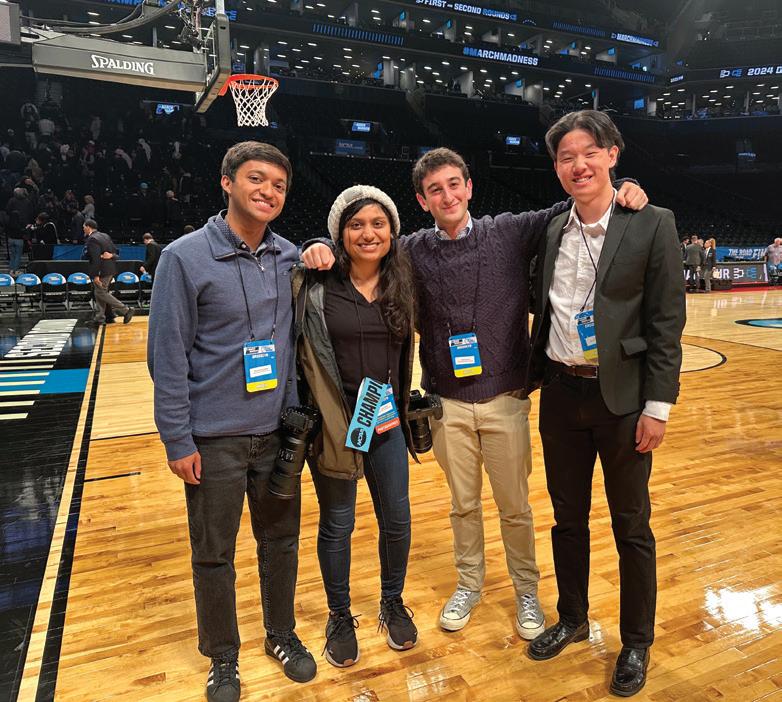

Write stories, interview people and produce under deadline. News reported by the community, for the community––all while having fun.
Daily alumni go on to work for major news outlets, including: The New York Times, USA Today, Sports Illustrated, The Washington Post, ESPN, The Wall Street Journal, Deadspin, People and Vox
email joinus@dailynorthwestern.com or visit:

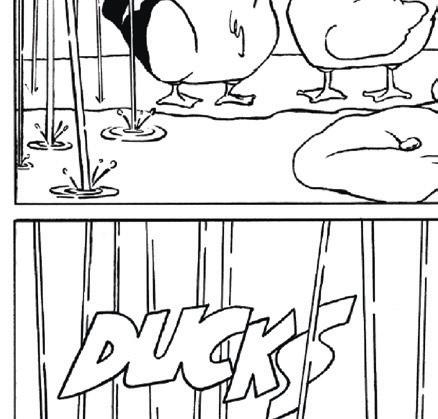

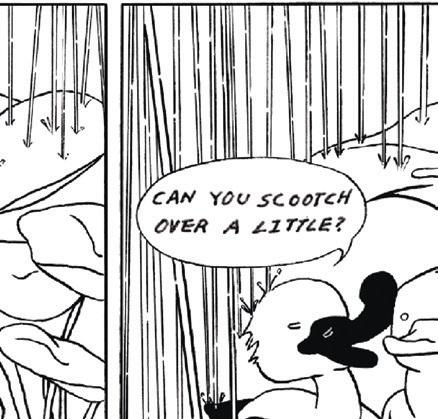


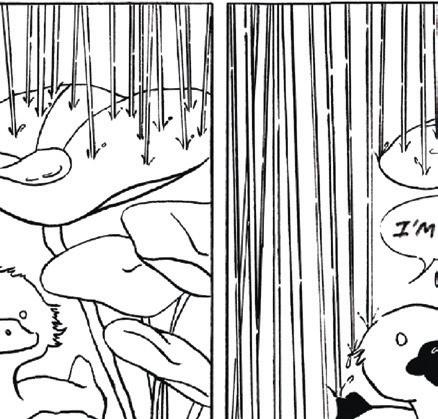
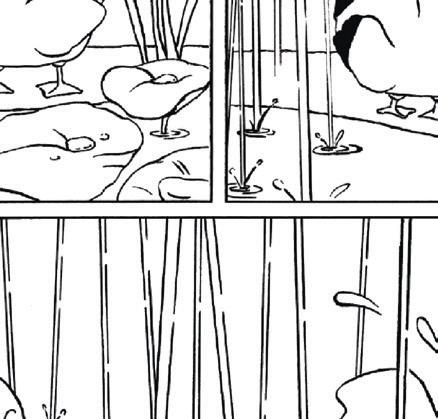

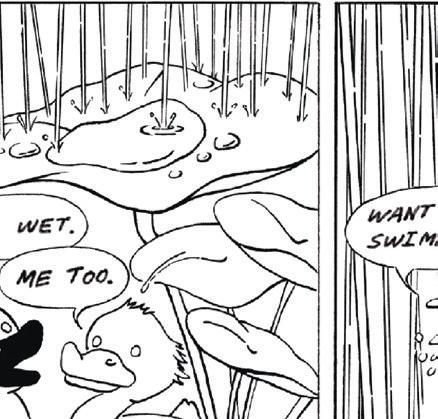



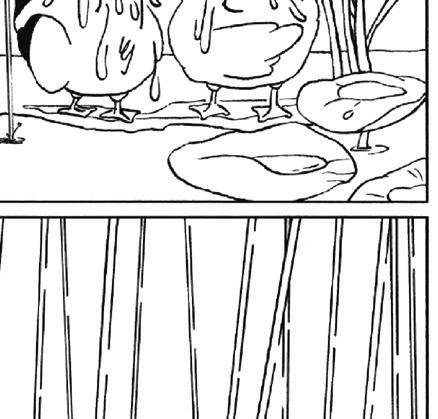

Nathaniel Foster is a student at the School of Professional Studies and writer of Ducks Dan and Dave. He can be contacted at NathanielFoster2027@u.northwestern.edu. Lia Kim is the illustrator for Ducks Dan and Dave and is not associated with Northwestern. The views expressed in this piece do not necessarily reflect the views of all staff members of The Daily Northwestern.
In the professors’ complaint, they argued the commi ee’s demands violated the U.S. Constitution’s provisions on free speech, due process, right to counsel and equal protection, largely because the commi ee claimed to be targeting the professors based on political speech.
e House Commi ee on Education and Workforce dropped a records request for two Northwestern Pritzker School of Law legal clinics ursday morning, e Hill rst reported.
e withdrawal comes less than a day a er Pritzker Profs. Sheila Bedi and Lynn Cohn sued the commi ee Wednesday, seeking an injunction to the records request.
“ e e ort is part of the federal government’s ongoing a ack on academic freedom, legal professionals, and the rule of law,” the lawsuit reads.
“ e Commi ee’s demands exceed its authority and have no valid legislative purpose; they are an a empt to investigate, intimidate, and punish institutions and individuals that the Commi ee has deemed ‘le -wing.’”
e March 27 le er seeking the relevant records, signed by U.S. Reps. Tim Walberg (R-Mich.) — the commi ee chair — and Burgess Owens (R-Utah), was the latest escalation in the committee’s investigation into NU’s response to alleged antisemitism on campus. e le er accused the University of supporting “antisemitic conduct” and the Community Justice and Civil Rights Clinic of “progressive-le political advocacy.”
It further demanded NU turn over records pertaining to Pritzker’s policies on legal clinics, documents on the Bluhm Legal Clinic and the Community Justice and Civil Rights Clinic, as well as hiring materials and performance reviews for Bedi.
By: Stephen Walsh
1
and “Pursuit of Happiness”
20 Music symbols that represent sounds
21 Gospel whose story of Christ's passion includes the "penitent thief" crucified along with Jesus
26 Mountain range in South America crossed by Jose de San Martin
named Roger who started in 1973’s Live and Let Die
40 Pet food
41 Captain Hook's second-in-command, Mr
42 Ten-nation Asian trading alliance whose members include Malaysia, Cambodia, and Indonesia
43 Male reproductive organ of a plant where pollen is produced
23 Flower that symbolizes love DOWN
Local Evanston Mediterranean and Persian restaurant,
In the ursday morning emergency court hearing, House General Counsel Ma hew Berry announced the commi ee would not continue to seek those records.
“ is win is also a victory for academic freedom, the rule of law, and bedrock constitutional principles,” a orneys representing Bedi and Cohn wrote in a joint news release ursday. “It demonstrates that educational institutions, academics, and a orneys can collectively stand up for their rights if they work together to combat unlawful government action.”
— Sasha Draeger-Mazer











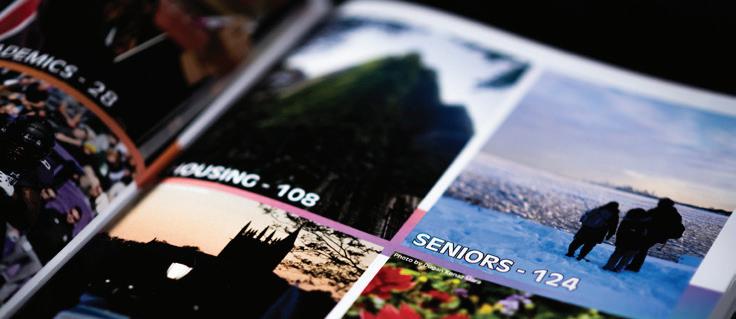

From page 1
antisemitic slogans and hate-filled language,” University President Michael Schill wrote in an email to the NU community early Monday afternoon.
The vandalism occurred on the second day of Passover, a Jewish holiday celebrating the Jews’ exodus from slavery in Egypt. Schill wrote in his email that the timing of the incident made the vandalism “all the more despicable.”
According to the Evanston campus blotter from University Police, the department is investigating “criminal damage to property,” first reported at 4:17 a.m.
“We are working systematically and utilizing camera footage, forensics and other methods to identify the individuals responsible for this vandalism,” Schill wrote in the email. “If these individuals are current Northwestern students, they will be immediately suspended and face full disciplinary proceedings under University policies, as well as criminal charges under the law.”
In March, NU published a report on its efforts to combat antisemitism, which claimed an 88% decrease in reports of antisemitism between November 2023 and November 2024. Schill wrote in the email that NU takes pride in its progress but that violations will
From page 1
able to easily apply the lessons I’ve learned and the approaches that I’ve seen work and be able to offer some of that guidance,” Martin said.
All five new board members attributed their campaigns’ success to community engagement, from holding events like coffee chats to maximizing the use of social media and email blasts.
Pinkard said that of all the coffee chats she had during her campaign, only one was hosted by a friend she knew prior to the election. Pinkard said that signaled that people were connecting with her message.
During the early voting period, Opdycke worked to ensure voters knew how to find her name on the ballot. Her name appeared last on the ballot due to the randomly selected order and could only be selected after scrolling on digital voting machines.
“I went to every single polling place on election day to make sure that the poll workers knew that they
From page 1
she said. “In a field so dominated by men, you would think they would have some awareness of how to make it more inclusive.”
Female mentorship encouraged camaraderie among women in campus sports media
Lowry also said Kitei’s efforts to go out of her way to welcome her is a key reason she joined and continued with WNUR.
Kitei, WNUR’s outgoing sports director, is also the vice president of NU’s chapter of the Association of Women in Sports Media, which hosts speaker series and other events dedicated to empowering women interested in sports journalism.
Kitei also does play-by-play and color commentary for the Big Ten Network, a dream of Lowry’s. Lowry said seeing Kitei pursue that career has inspired her to keep chasing it.
“You can always look up to someone from afar and want to be like them,” Lowry said. “But when you meet someone in real life and watch them do this, it’s even better.”
Medill sophomore Gabriella Egozi also said Kitei was a key part of her professional growth.
Egozi said the strong female mentorship at NU has been integral to her development, in part due to Medill’s alumni network, which boasts numerous trailblazing women in sports media. This includes play-by-play commentator and studio host Lisa Byington and the Denver Nuggets’ first female analyst Katy Winge, both of whom recently returned to campus to speak to sports
From page 1
has been a vocal proponent of affordable housing and supportive of development on her social media.
Vielma said she was interviewed by Biss last Tuesday and informed of his intention to appoint her on Friday. Halik said he met with Biss April 4 and left feeling “pretty positive,” yet on Friday he received an email from the mayor saying that he would not be reappointed.
Biss decided against reappointing Halik after being approached by a group representing a majority of councilmembers who sought a new commissioner, according to his email. He added that community members have asked for younger representation on boards, commissions and committees — and specifically for an affordable housing expert on the Land Use Commission.
“(Vielma) has deep knowledge and experience with a variety of aspects of affordable housing, and I’m confident she will be a wonderful addition to the Land Use Commission,” Biss wrote.
Vielma underscored the need for increased community engagement concerning Envision Evanston and highlighted her affordable housing work across
be met with consequences.
NU’s chapter of Jewish Voice for Peace declined to comment on the vandalism.
Students Supporting Israel at Northwestern, an unregistered chapter at NU of the international proIsrael organization, posted photos of the graffiti on Instagram Monday evening.
The photos show part of the sign reading “Kresge Centennial Hall” on the front of the building crossed out with red paint, and “Death to Israel” written in red paint below it. A message calling for an Intifada was spray-painted on the ground in front of the hall’s main entrance.
Painted red hands — which can be modern symbols of calls for ceasefire — covered the south entrance of University Hall.
SSI at NU posted a statement condemning the graffiti as “a direct threat to Jewish students’ safety and security at Northwestern” in the post.
Unity of Fields, a national pro-Palestinian advocacy group, posted additional photos of the vandalism on X.
One photo shows the front entrance of Kresge more clearly, which had red hand prints and flyers posted containing people’s faces, which were unidentifiable from the photos.
Spray-painted red across the bottom of Kresge’s
should be telling people to scroll down to get all the names,” Opdycke said.
Martin said much of his campaigning was conducted at extracurricular activities, where he could easily communicate with community members and support ETHS students in their “passion projects.”
He said he aims to continue attending such events as a board member.
To begin building relationships with his colleagues on the board, Martin added he has already met with each of the board’s members individually to have a “very open dialogue” without predetermined “agenda points to get through.”
Wymer is excited to quickly build relationships with his new colleagues so they can continue addressing the district’s financial crisis, he said. The other newly elected District 65 board members echoed a similar sentiment. Anderson, whose granddaughter attends Dr. Bessie Rhodes School of Global Studies, said she hopes the district avoids repeating the mistakes it made when considering the school’s impending closure.
journalists.
Medill junior and outgoing Inside NU Editor in Chief Sophia Vlahakis also said she never would have begun reporting on sports if not for the female upperclassmen that paved the way. She said she considers herself lucky that these women invested in creating a safe and inclusive community for women in sports media.
Considering Inside NU’s male-dominated editorial board, Vlahakis emphasized that the men were also supportive. As editor in chief, she said the men were her “backbone,” and that they never second-guessed their support of her.
For Medill students covering NU sports, the success of the women’s teams — particularly lacrosse and field hockey — has cultivated an environment in which women’s sports coverage is prioritized by campus media, Vlahakis said.
Vlahakis has covered NU’s journeys to two women’s lacrosse national championships in 2023 and 2025, respectively, and the field hockey national championship in 2023.
“The lacrosse athletes I’ve covered are the best athletes at this school,” Vlahakis said. “The field hockey team has gone to the championship like four times in a row. That’s an incredible level of dominance.”
There’s still more work to be done, though
Although Medill sophomore and Inside NU Editor in Chief Yanyan Li said she has never felt excluded in sports media spaces, she wishes they had more women. For instance, she said, Inside NU only has three or four women actively involved in the publication.
“I definitely believe that the more women involved,
12 states.
Still, some residents criticized Vielma’s social media presence. Washburn cited an X post by Vielma from Jan. 8, which was critical of public comment at a commission meeting. It was followed by another post reading “Ok I’m feeling a little better with a handful of fantastic comments from Evanston residents with a background in planning and fair housing. Understandably, they are in support of EE2045.”
Washburn said she worried this indicated that Vielma would listen only to residents with expertise in housing or zoning.
Vielma said this was “quite the leap from the casual, albeit snarky, social media post.” She said the posts illustrate that, as a resident, she listens to others’ concerns.
In his email, Biss asked staff to consider his decision through a “positive lens” and expressed appreciation for Halik’s time on the commission. Halik said he did not think the decision was personal, but rather driven by “the mayor’s agenda.”
Halik and Washburn both expressed concern over appointees being chosen from those with aligned ideals and priorities.
doors, the word “River” appeared with a right arrow pointing to the word “Sea,” followed by an inverted red triangle. Another inverted red triangle was spray painted on the ground in front of the doors.
In recent history, the inverted red triangle has been used at various times as a way to identify Israeli targets for Hamas fighters or a symbol of Palestinian resistance. During World War II, the symbol was used to identify political prisoners in Nazi concentration camps.
“For me, to see an upside down red triangle on University Hall on the Northwestern campus, it feels like that’s where the terms like ‘egregious’ and ‘vile’ immediately come to mind for me,” NU Hillel Executive Director Michael Simon told The Daily in an interview.
Red paint appeared to have been poured down the steps in front of University Hall in another photo posted on X by Unity of Fields.
In a photo posted by Unity of Fields, a non-inverted red triangle was also painted by the bottom of the Kresge steps to the right of the message calling for an Intifada.
Simon said he was “deeply disturbed and upset” that the message appeared on NU’s campus, calling it “jarring.”
“Whether we fully disagree with Israel’s actions in
“That’s one of my strengths — being in the community, talking to the community, collaborating with the community,” Anderson said. “I’m there to help make decisions but not without input from the people that it’s going to affect.”
As a board member, Opdycke’s goal is to improve the board’s relationship with the district’s schools. The district currently has a liaison system, where board members are assigned to be the point person for specific schools.
Opdycke said her priority is getting the board members more involved with each school’s PTA, so parents have more access to their assigned board members. She added that she wants to partner with Community Organizing & Family Issues, an organization that prioritizes families from marginalized groups, to ensure voices underrepresented in PTAs are heard.
In consideration of further SDRP spending cuts, Pinkard said she wants the district to evaluate its partnerships with other organizations in the city, such as the McGaw YMCA and Evanston Public Library.
the better,” Li said.
Lowry estimated that only a quarter of the people who consistently attend WNUR meetings are women. She said this number is an improvement from a few years ago, but she wishes more women would join.
Outside of campus publications, Lowry said she has seen more women entering sports media, particularly in broadcast. Lowry said women have always been wellrepresented in sideline reporting, but not in analyst and play-by-play positions. However, she said she has seen more women stepping into analyst and commentator roles in the last few years.
“I think it only goes up from here,” Lowry said. “There’s no better time to break into the industry.”
Kitei said she has been lucky to have been in workplaces — including NBC and ESPN —where she saw other women in the newsroom.
However, Kitei added that she hasn’t had that experience everywhere.
In 2023, Kitei worked as a play-by-play commentator for the Yarmouth-Dennis Red Sox of the Cape Cod Baseball League, a prestigious collegiate summer baseball league.
Among the 25 broadcasters for the 10 team league, she was the only woman.
“At the time, I hadn’t really realized the scope of what I was signing up for or the opportunity I had been given,” Kitei said.
Kitei said male commentators often would fail to shake her hand when she arrived at the field because they assumed — as a woman — she wasn’t a commentator, too. She said it was “frustrating” to have to introduce herself, but that she counts herself lucky for
Gaza, or we agree with them, or we’re in between, this kind of language is just beyond the pale,” Simon told The Daily.
Weinberg senior and NU Hillel President Sari Eisen said the vandalism has made many students feel uncomfortable and unsafe.
“It was really disheartening and troubling to see those words and symbols, especially spray painted on the building,” Eisen said. “I’m glad that it was able to be erased quickly, but it’s really troubling to see that (it) was on our campus.”
In an email sent to the Hillel community, Simon said Hillel will continue to be in close contact with the University and Evanston Police Departments to ensure a safe environment for Jewish students.
Simon expressed gratitude to the University for taking the vandalism seriously and acting quickly to address the issue.
“(The message of the vandalism) just has no place in a university that’s trying to foster an environment free of threat, intimidation and harassment,” Simon told The Daily.
i.steinberg@dailynorthwestern.com
n.kanieskikoso@dailynorthwestern.com
l.ogburn@dailynorthwestern.com
“The school doesn’t have to be the provider of everything, but it should be the connector of resources and the people,” Pinkard said.
Wymer said he aims to help develop a five-year strategic plan with “clear benchmarks” to track the district’s equity work. This would replace the current plan, which is set to expire at the end of the 2024-25 school year. Anderson questioned the legality of federal executive orders targeting diversity, equity and inclusion programs at public schools and insisted board members should remain focused on the needs of District 65 students. Wymer agreed.
“I’m proud that (my campaign) said we don’t have to compromise our values in order to be financially sustainable and accountable, and I think that resonated with folks,” Wymer said. “We are in a climate right now, where nationally, there’s a lot of risks for our marginalized populations and communities.”
j.baker@dailynorthwestern.com
a.prakash@dailynorthwestern.com
having a supportive team behind her.
Kitei was the first woman to call the league’s All-Star Game, despite the broadcast program existing for more than 20 years.
Kitei said she sees that milestone as a marker of how far the world has come in female representation in sports broadcasting, particularly in historically maledominated sports and leagues.
Even though sports media has come a long way, Kitei said she still occasionally receives pushback from her audience.
She recently broadcasted a NU baseball game for WNUR and said she saw a hate comment on X saying she should be banned from sports forever for being a woman in sports journalism.
“When you have people telling you that you can’t succeed or that you should stop because you’re not gonna be good enough, that’s a barrier for a lot of women,” Kitei said. “Doing something where you are a minority and your voice isn’t the norm and recognizing that a lot of people are gonna hate you for that because they’re misogynistic is the biggest barrier.”
Lowry agreed that the fear of pushback is a key barrier for women wanting to get involved in sports media. She said that it’s important for women to have the mentality that they deserve to be in sports media spaces and not succumb to the backlash.
“Showing up, showing your presence, and not backing down is so important,” Lowry said. “The worst thing you could do is roll over and give in to the people who don’t take you seriously.”
a.singh@dailynorthwestern.edu

The appointment will be up for confirmation at the April 28 City Council meeting, the same day the new council will be sworn in.
LACROSSE
By HENRY FRIEMAN daily senior staffer @henryfrieman
When Northwestern coach Kelly Amonte Hiller inherited a club team slowly transitioning back to varsity lacrosse in 2000, there were few expectations for the Midwestern program. e Big Ten had yet to sanction lacrosse and wouldn’t until 2015.
But once Amonte Hiller and the Wildcats won their rst national title in 2005, three years a er they returned to the varsity level — and then won seven more — the program became a nationally renowned juggernaut.
As NU continues its journey to the forefront of the women’s college lacrosse landscape, it has added a new venture to its quest to revolutionize the growth of lacrosse in the Midwest.
e red-hot ’Cats, boasting a 12-2 record, will host the inaugural “Lacrosse Night in Chicago” at Martin Stadium in the hopes of se ing a new program a endance record, the latest milestone on its meteoric ascension. e packed stadium will serve as a test run for the 2026 NCAA National Championship, which will be held on that same eld.
“We want to show that people have interest in lacrosse. It’s a beautiful game,” Amonte Hiller told e Daily. “To get people in the stands and get people seeing the beauty of the sport is just such an important thing for our sport in general, but for Midwest lacrosse, too.”
Women’s sports reaching new heights
Amonte Hiller said the team conceived the idea of “Lacrosse Night in Chicago” a er seeing the “boom” of women’s sports across the country. She mentioned the record-breaking television ratings during the 2024 NCAA Women’s Basketball Final Four. Millions of fans across the country tuned in.
Several teams, both professional and collegiate, have brought in packed houses for women’s sports during the past few years. 92,003 people crammed into Memorial Stadium in Lincoln, Nebraska, in August 2023 to watch Nebraska’s volleyball team, se ing a world record for a endance at a women’s sporting event in the process. With next year’s semi nals and national championship slated to take place in Evanston, it marks the rst time either a men’s or women’s lacrosse title game has been held outside of the Eastern time zone. Amonte Hiller and her team are seeking to capitalize on the women’s
sports boom and show the power of Midwest lacrosse.
“We’ve done really well with our crowds over the past several years,” Amonte Hiller said. “We want to show that we can kind of take this to the next level.”
Expanding past EST
e sport of lacrosse is primarily centered around — and played — in East Coast states. Maryland has won an NCAA-best 14 national titles, while Boston College, North Carolina and Virginia have found success at the highest level.
When Amonte Hiller took the reins to revive NU’s lacrosse program in 2000, lacrosse was hardly a factor in the Midwest. e coach carried a chip on her shoulder as she built the program, fostering an underdog mentality while recruiting and competing against the game’s top programs.
“I’ve always kind of felt like a li le bit of an outsider in my life, and that’s why I t in so well here — I feel like we’re always the outsider in the game of lacrosse,” Amonte Hiller said. “We’ve kind of go en our fans to buy into that.”
A major part of NU’s success has come from Amonte Hiller’s willingness to recruit out west. e coach called it the team’s “lifeblood.”
Selena Lasota joined the ’Cats from British Columbia, Canada, in 2015. She wound up se ing NU’s scoring record before it was broken by Scane, who hails from Clarkston, Michigan. Both players were named Tewaaraton nalists — Scane won two — and invigorated the ’Cats a ack.
Amonte Hiller recruited Taylor ornton out of Dallas in 2009. rough her four years with the ’Cats, ornton emerged as a fearsome defender to go up against in the fan, winning IWLCA National Defender of the Year in 2011 and the Honda Sport Award in 2012. She ranks third in NU history in caused turnovers. Currently, 15 players on the NU roster hail from a state outside of the Eastern time zone.
“ ere’s this big notion that lacrosse is only for the East Coast,” Amonte Hiller said. “We won the rst national championship o the East Coast. … It’s just really special to see the sport grow.”
Today, the local growth in Evanston itself is evident. When the ve-time IWLCA Coach of the Year drives down the streets of Evanston and its surrounding areas, she said she sees lacrosse nets sca ered in backyards.
“ at’s a really cool thing, to see the excitement of the sport growing, seeing kids younger and younger
playing it,” Amonte Hiller said. “ e love of the game, and I think the exposure of our success, has really helped the sport in this area grow.”
Se ing the stage
NU is heavily marketing ursday’s game.
Smith appeared with Amonte Hiller on the Big Ten Network, Amonte Hiller sat down for a podcast episode with the long-running NU sports podcast West Lot Pirates and ABC7 Chicago showed up for the team’s media availability on Monday.
Meanwhile, NU program legends Scane and Erin Coykendall, representing the upstart Women’s Lacrosse League as brand ambassadors, will be in the facility ursday night to sign autographs.
“You want your players to leave here, love the game, feel like they can achieve anything that they want in life and just stay connected and nd ways to give back what they were given and really pay it forward so this sport can continue to grow,” Amonte Hiller said. “I love how Izzy and Erin now have a platform to just continue to inspire.”
Additionally, the large Michigan alumni base in Chicago should help bring fans into Martin Stadium.
“We want to try to encourage all Michigan people to come out and support as well, so we can do something special,” Amonte Hiller said. “ is isn’t just about
Northwestern. is is about the bigger picture and growth of the sport.”
e venue has been modi ed to accommodate NU’s football program as Ryan Field is rebuilt. It seats approximately 12,000 fans. A temporary video board has been installed in the corner of the eld, and those in the higher rows can see Lake Michigan from their seats. e matchup has large implications: with a win, the ’Cats will clinch a share of the Big Ten title. But, more importantly, the game serves as a marker of the growth NU lacrosse has displayed from its humble beginnings as a club team turned varsity squad that became a national powerhouse, as well as the growth the sport of women’s lacrosse has seen over the rst quarter of the century.
Amonte Hiller encouraged fans — even those who haven’t seen lacrosse before — to walk through Martin Stadium’s gates for ursday’s matchup.
“ is is something that you can do to support your daughters and young women. I’ve seen how people have shown up for other women’s sports. I think this is the next step for the women’s sports at Northwestern — let’s show up, show out, and show that,” Amonte Hiller said. “We can produce a crowd. We can produce excitement. We can do some of the same things that men’s sports have done. And if you have a daughter, if you have a sister or a mother that values it, show up for them.” h.
ieman@dailynorthwestern.com

WOMEN’S TENNIS
By CHAR LIE SPUNGIN
daily senior staffer @charliespungin
Before Northwestern took the court against Illinois Saturday, coach Claire Pollard stood before a crowd of spectators with her team behind her. Only a green fence at Vandy Christie Tennis Center separated Pollard and those listening to her.
In their four seasons at NU, Pra and Rabjohns were part of two NCAA tournament teams. Pra has consistently been in the ’Cats’ lineup for each of the past four seasons, while Rabjohns became a mainstay during her sophomore season.
“We feel like we’ve accomplished a lot here,” Rabjohns said. “Obviously, we’ve made lifelong relationships, (so) we’re very sad that we’re not going to be with our teammates every single day, pu ing in the work every single day. It’s kind of bi ersweet.”
Being local products, the two had many family and friends in a endance Saturday. Rabjohns’ parents and grandparents were watching from the sidelines, while Pra said her childhood coach was able to watch her perform as well — which she called a “full circle moment.”
e ve-time Big Ten Coach of the Year heaped signi cant praise upon her graduating class: graduate student Britany Lau and seniors Sydney Pra and Kiley Rabjohns. While Lau has only been at NU for two years, Pra and Rabjohns have spent all four of their collegiate years as Wildcats a er growing up within 20 miles of Evanston. Big Ten), 4-1, as Pra and Rabjohns played their nal collegiate tennis match in Evanston.
you’re not from the Midwest, I don’t think it necessarily has the same sort of feeling.” e Wildcats (11-12, 4-7 Big Ten) fell in Saturday’s
players,” Pra said. “I’ve really struggled here, especially (in) my freshman, sophomore year. It was not easy for me, and she always believed in me and my tennis game, and that’s what’s led me to be able to have some successful seasons.”
Pra , playing at the No. 4 position, secured the ’Cats’ lone point of the day against Illinois in a 3-6, 6-2, 6-1 comeback victory in singles. She jumped out to a 4-0 lead in the second set to grab the momentum, and in the third set, she broke at 1-1 — never looking back.
With the win, Pra posted her team-best 15th singles win of the season.
“Coach Ellyse (Hamlin) came over and was talking to me about how to change my strategy,” Pra said. “I was like, ‘We’re good. We got this.’ I feel like I picked up my energy a li le bit and was able to play my game be er in the second and third set.”
Pollard, in her 27th season as the team’s head On the opposite side of NU’s outdoor courts,
tory with a crosscourt backhand winner

un nished at 6-2, 5-5 a er she came back from down a break in the second set.
“ is week I’ve been super focused on this match and preparing for this match,” Rabjohns said. “I felt like I was ready to go, and I knew I had to take chances when I had them. I was taking advantage of them and just trusting my game.”
e seasoned veterans have each posted 10 doubles wins this season, which is tied for second best on the team.
e two have one weekend remaining in the regular season, during which they will travel to Purdue and Indiana. When Pollard spoke about both players pre-match, she said Pra and Rabjohns both possessed an incredible work ethic and rarely missed practices. She praised them as both tennis players and people, and she said how much of a pleasure it was to have them alongside her for


“I’d take them back over and over again, which is the biggest compliment you can give someone,” Pollard said. “ ey’ve both grown a lot. ey really show up every day, so I’m really proud of w hat they’ve contributed to the program and the kind of people they are.”
c.spungin@dailynorthwestern.com
